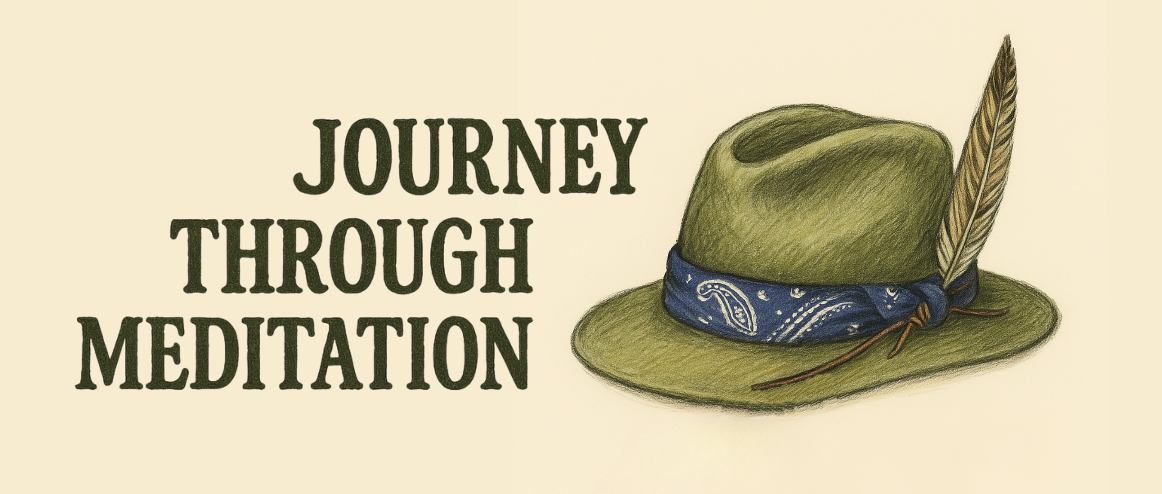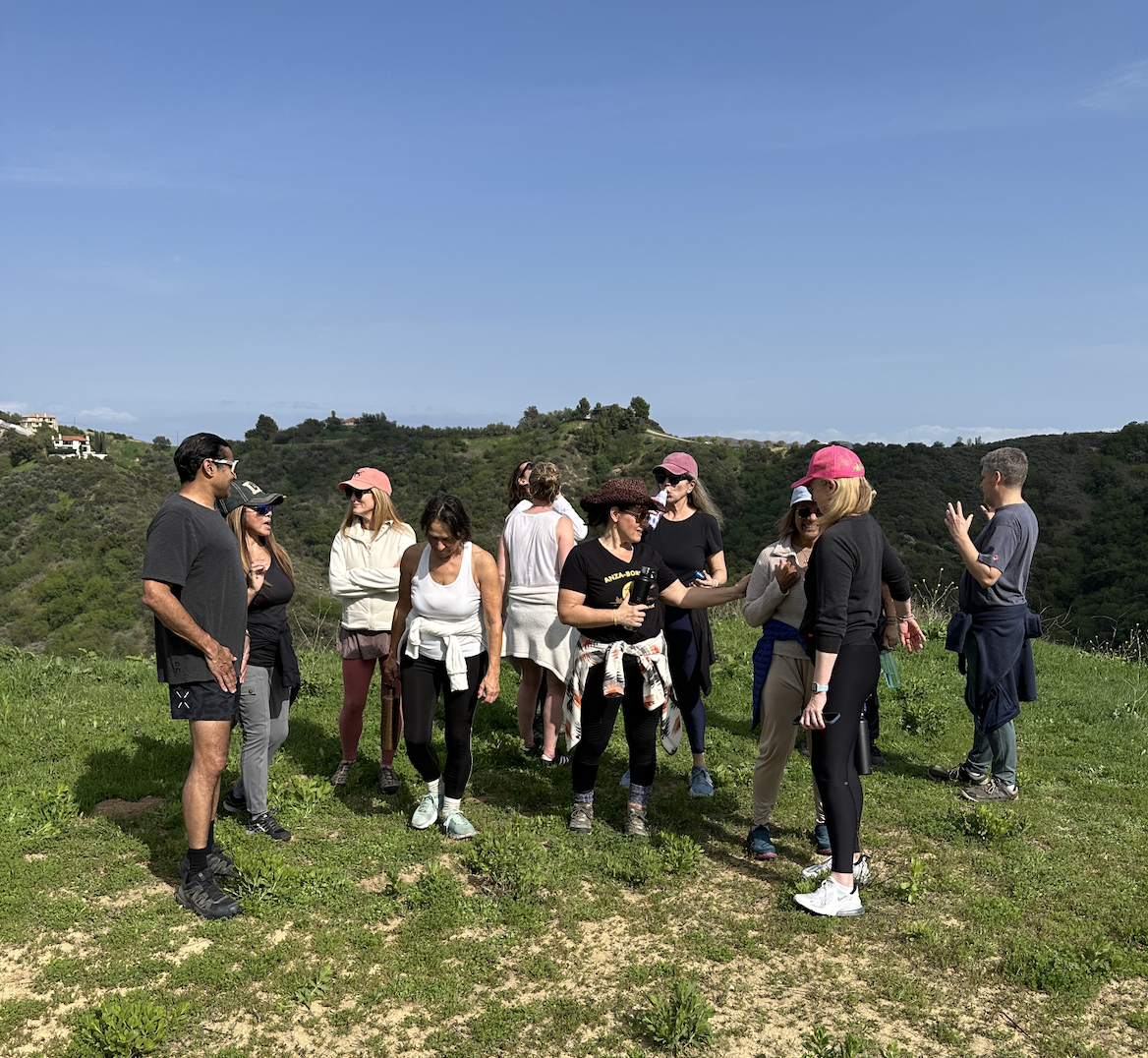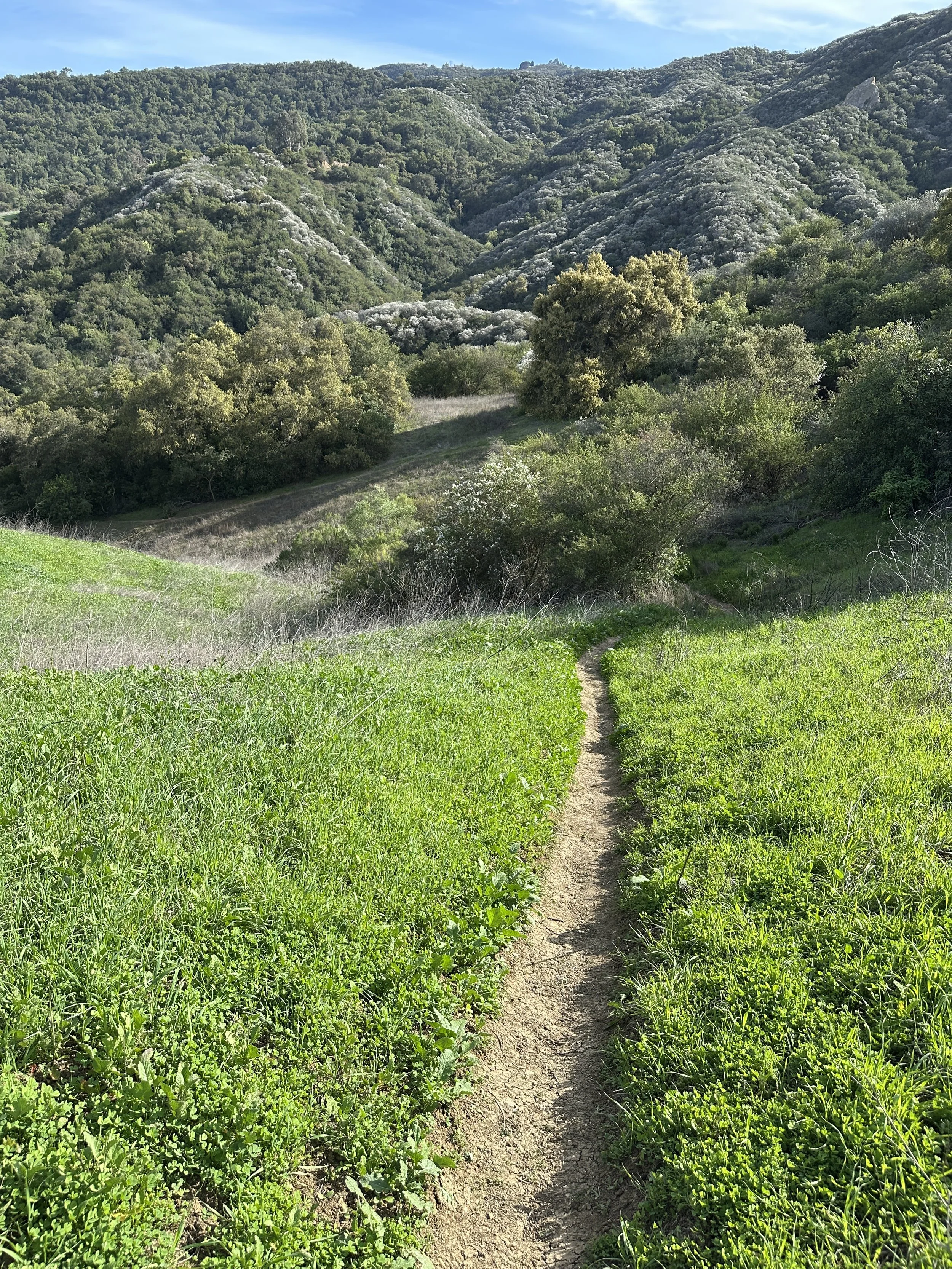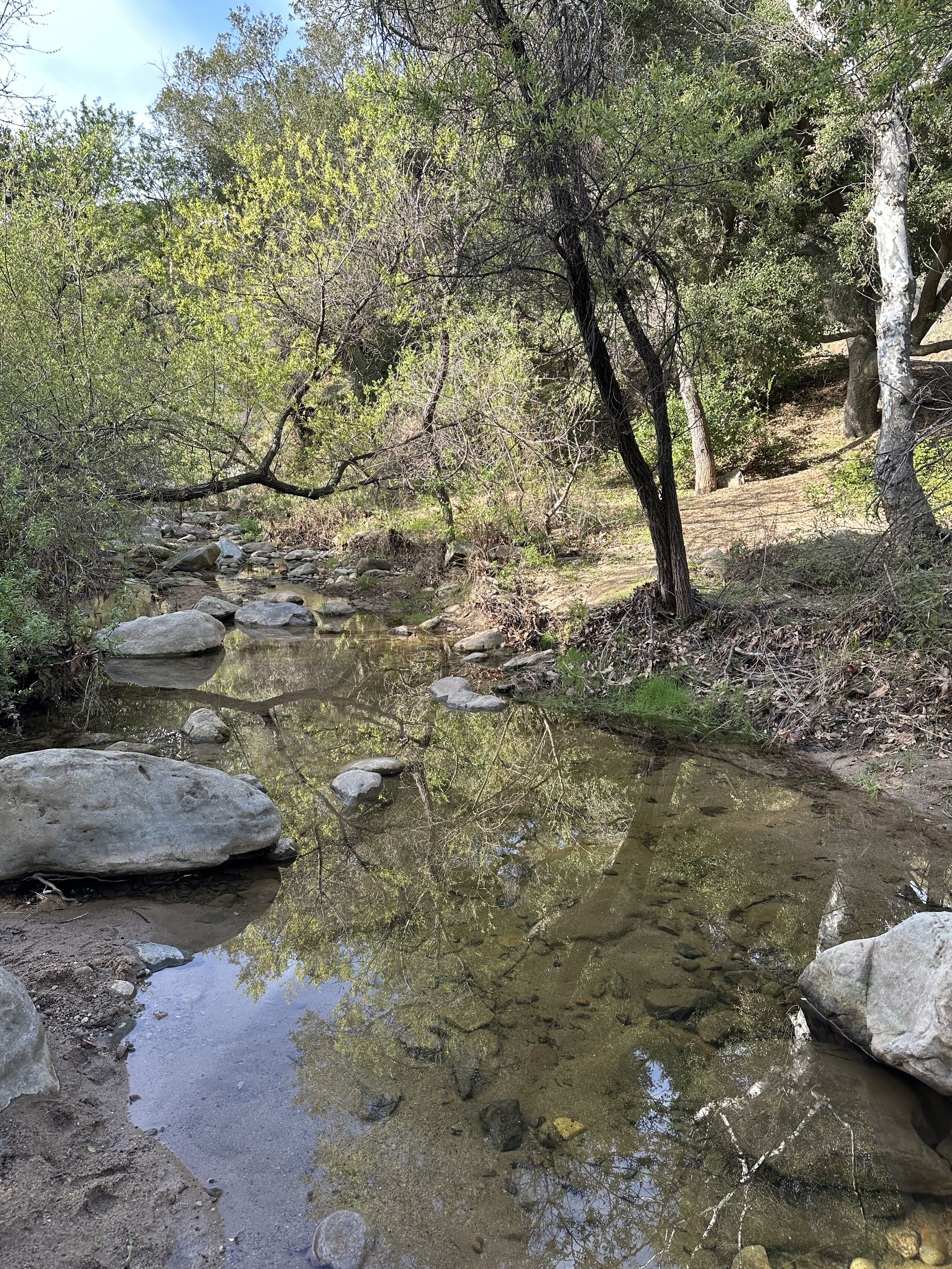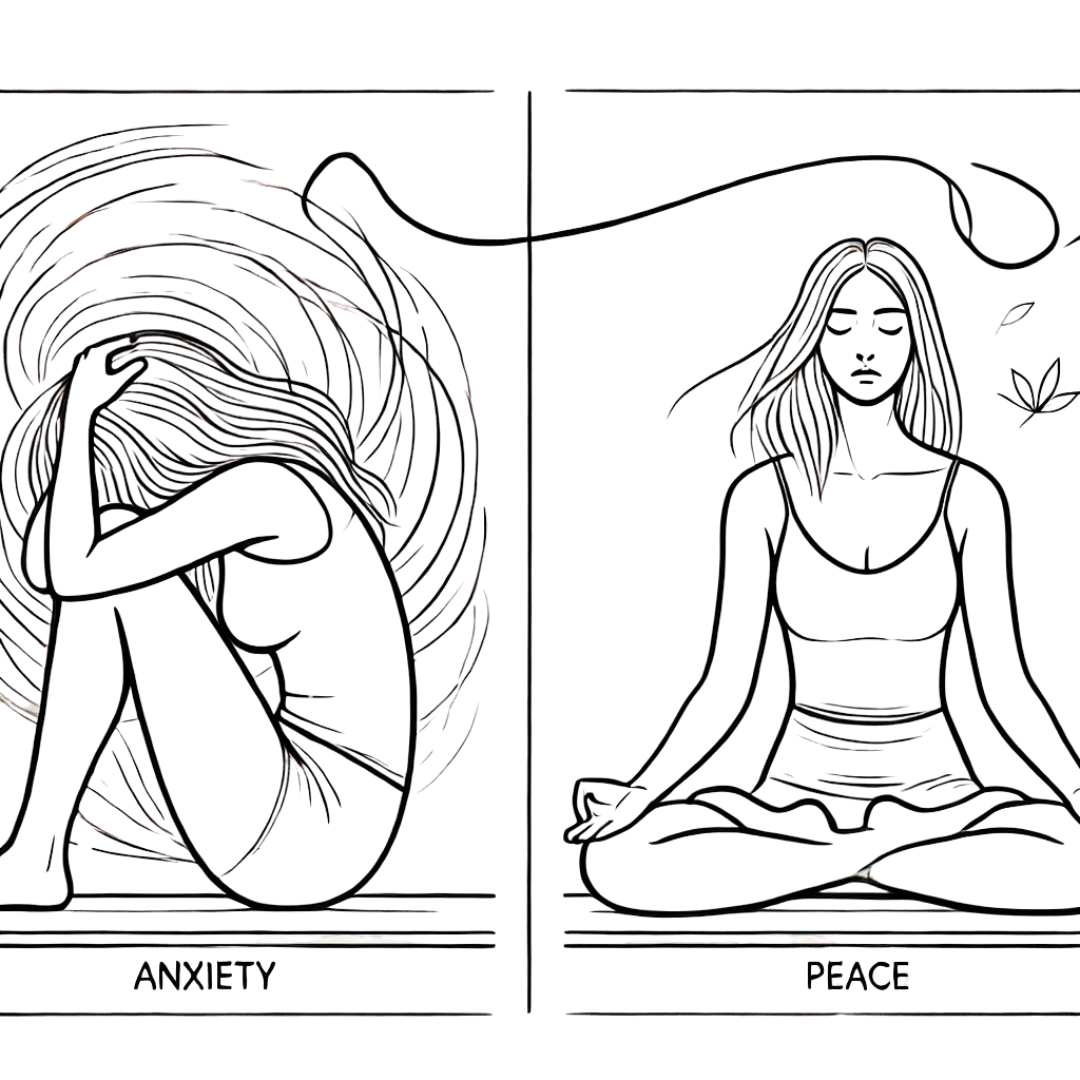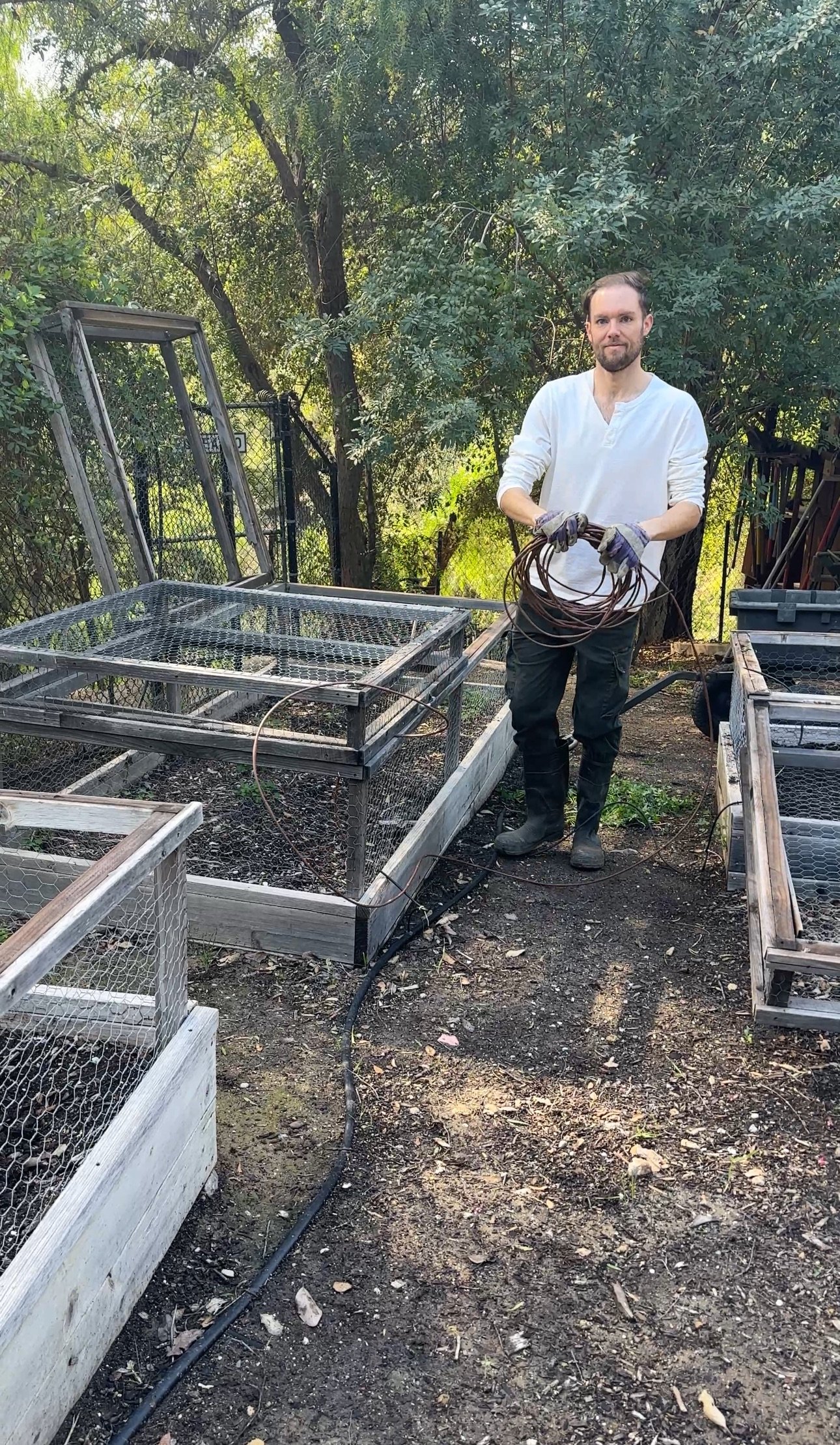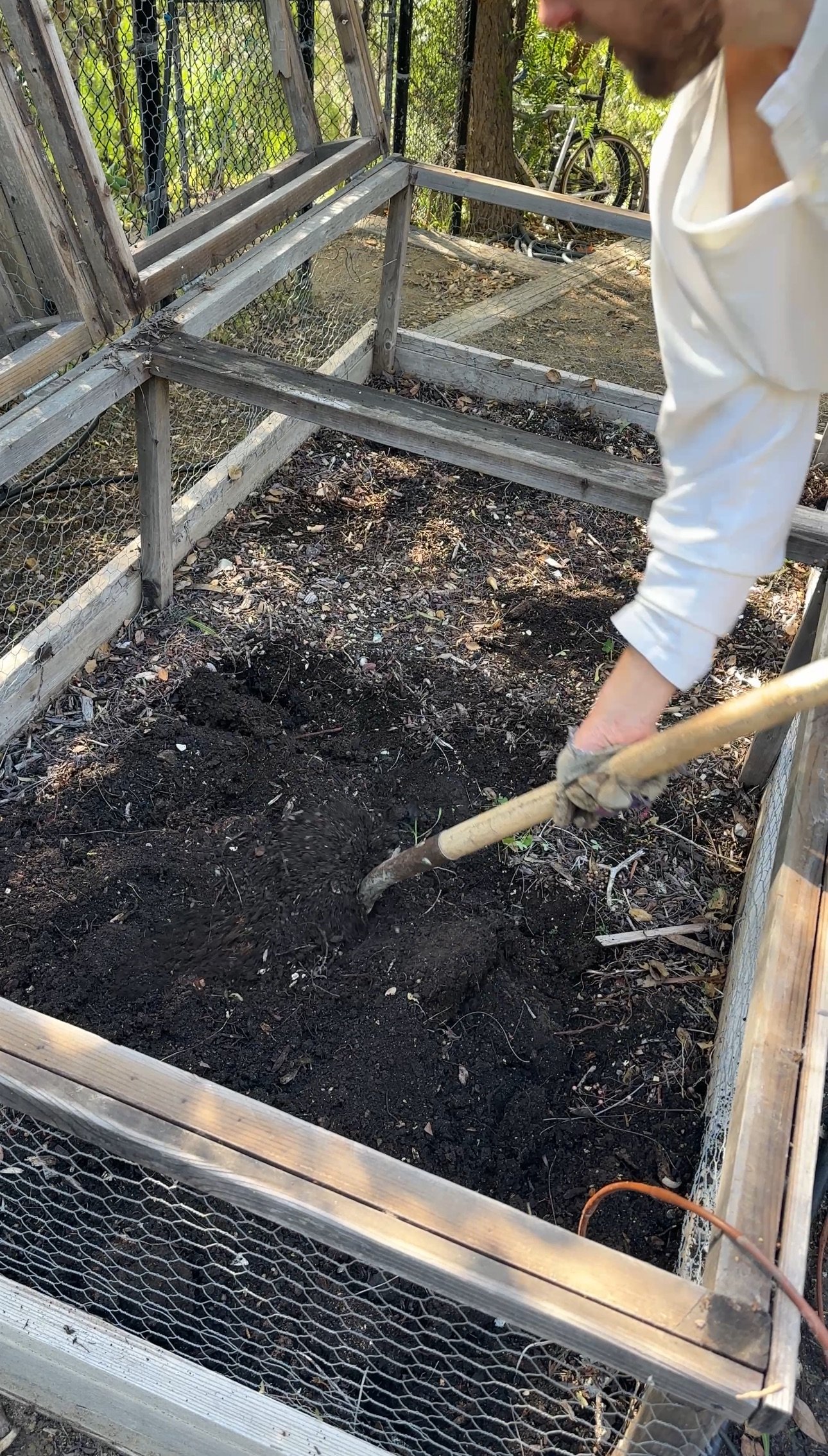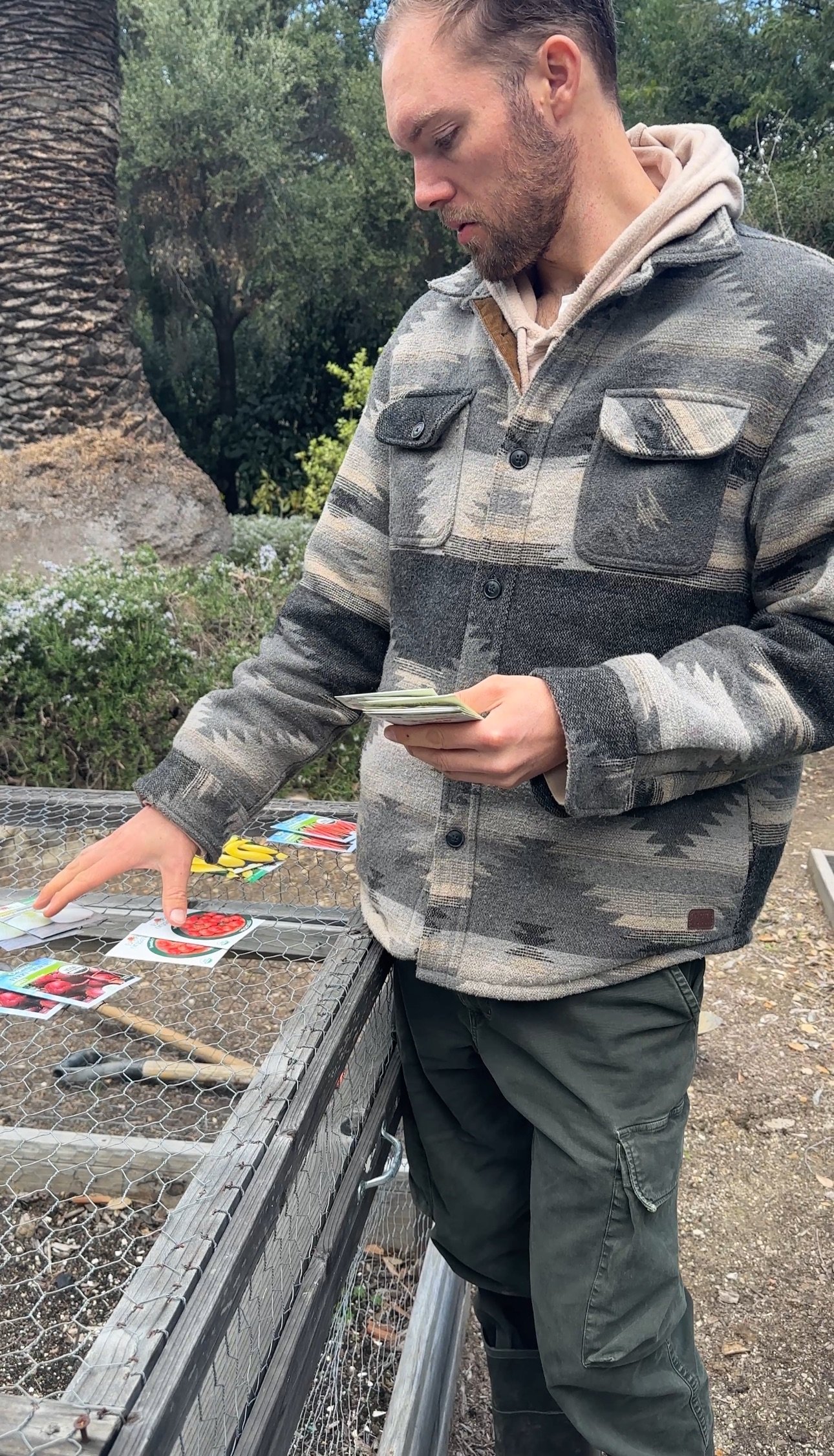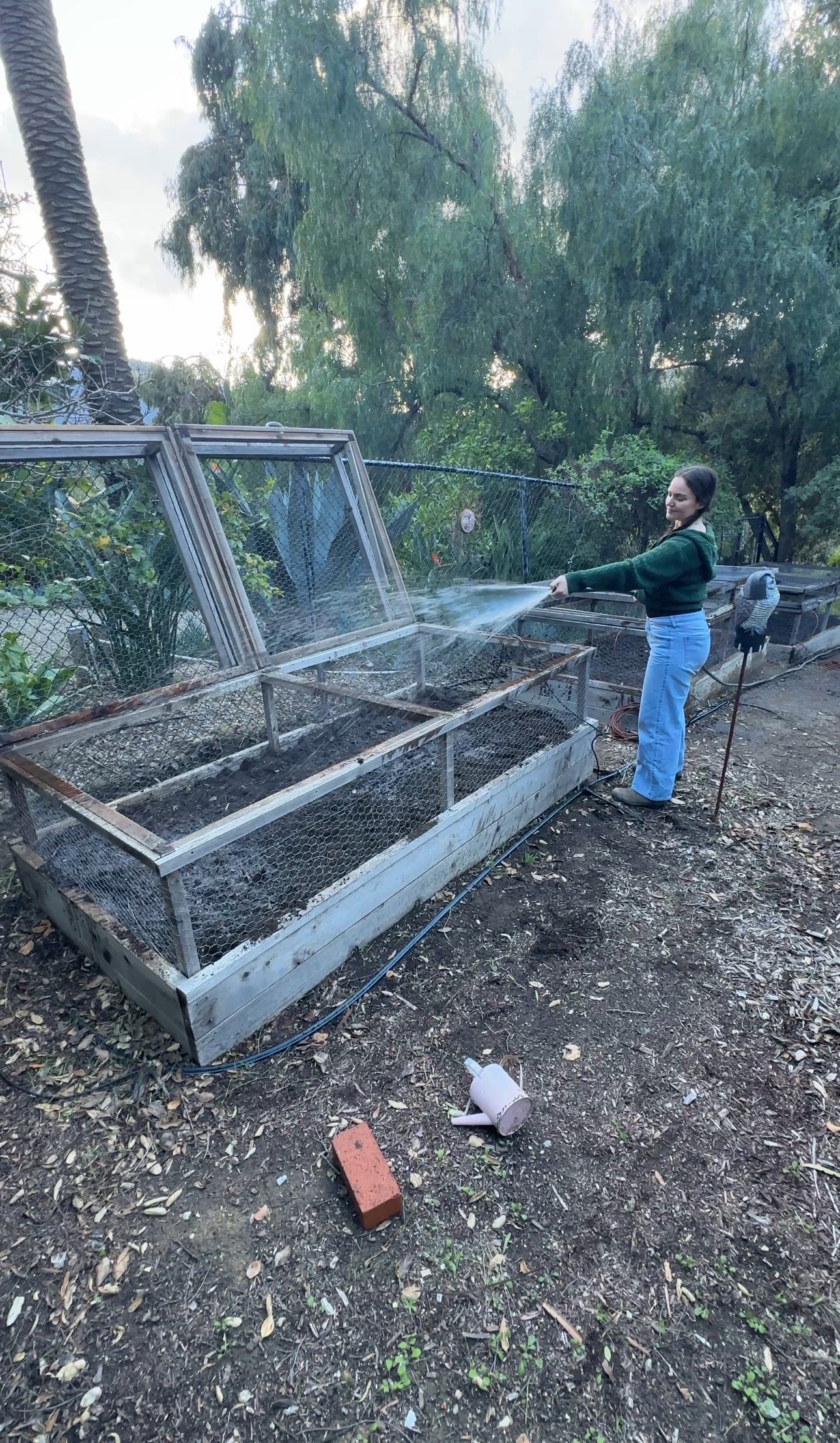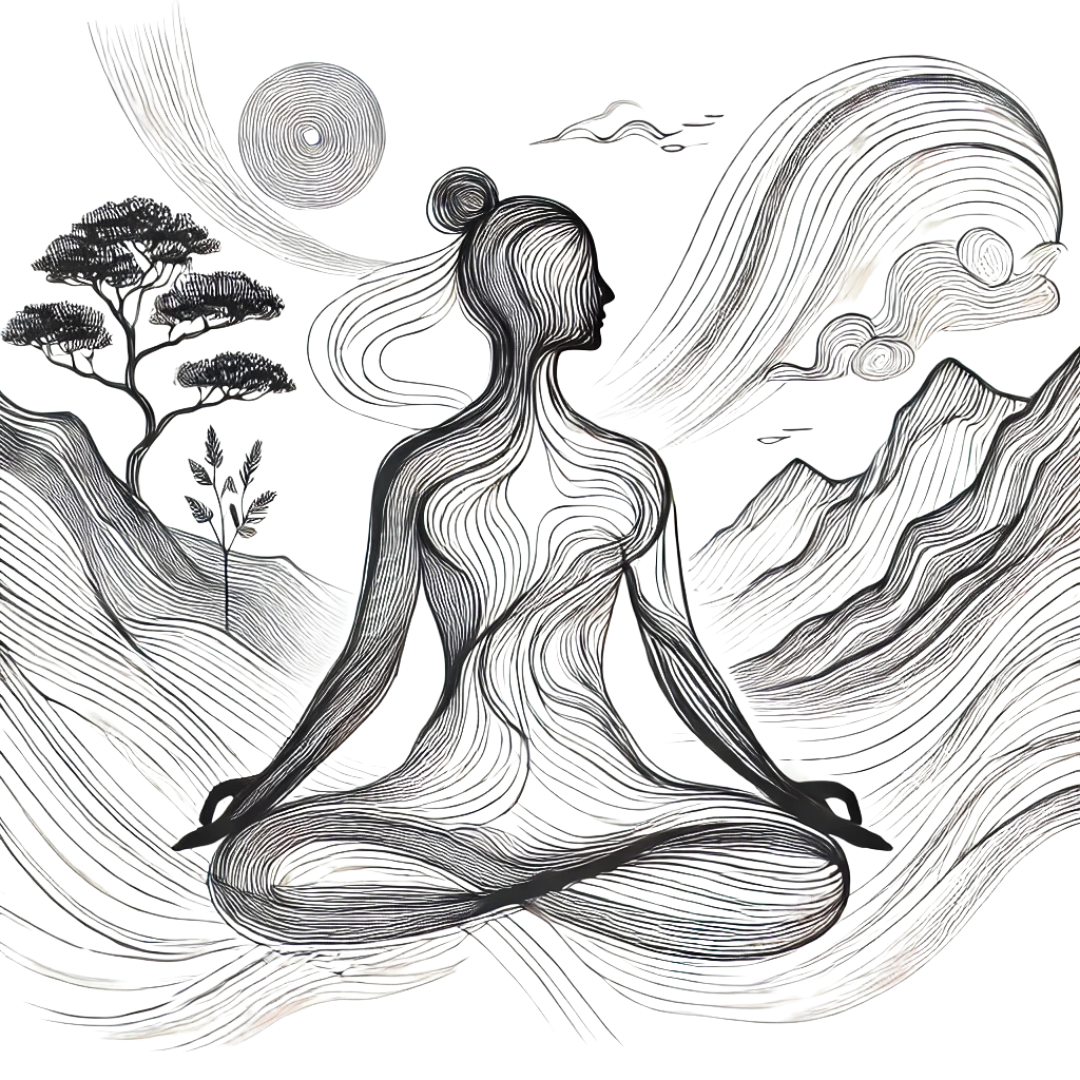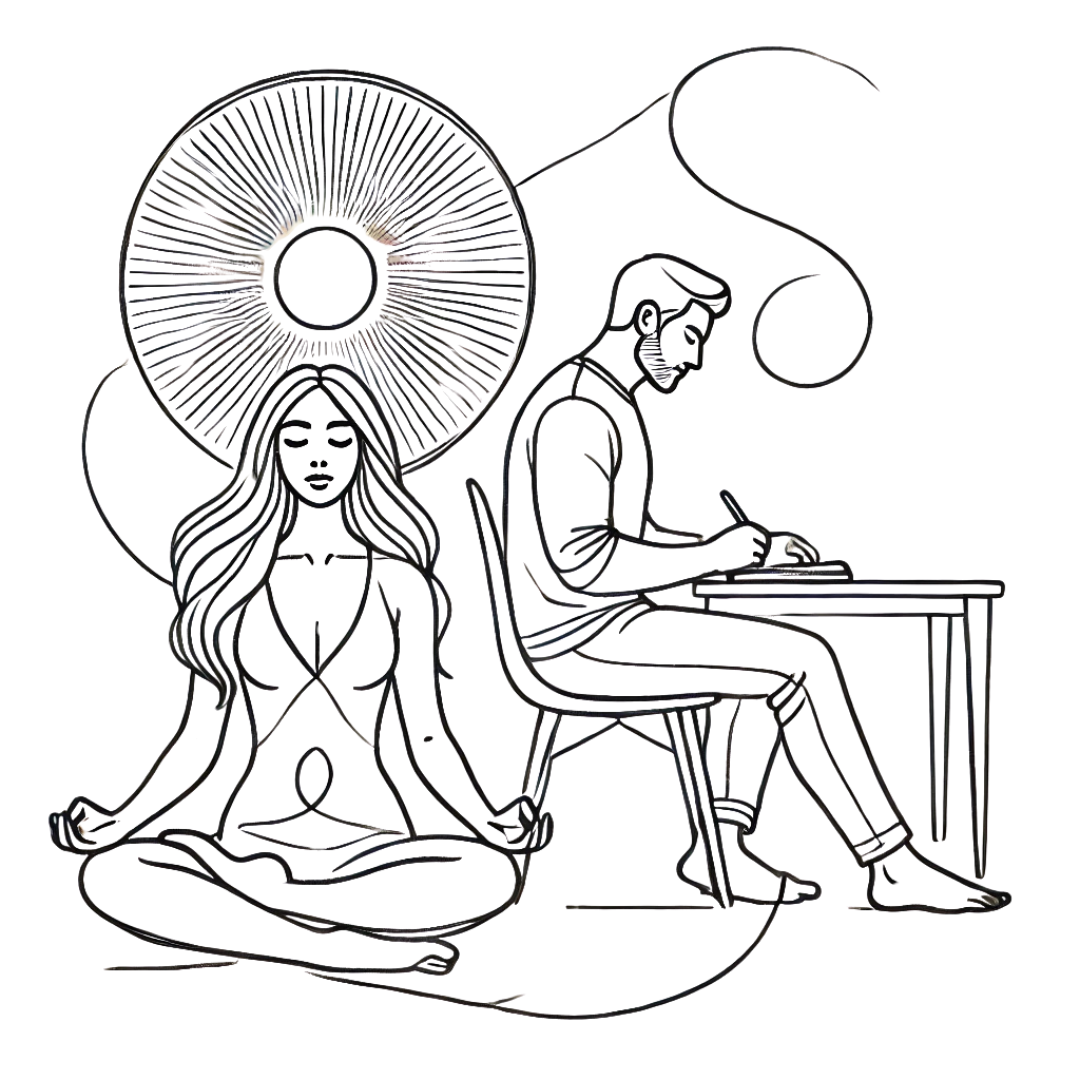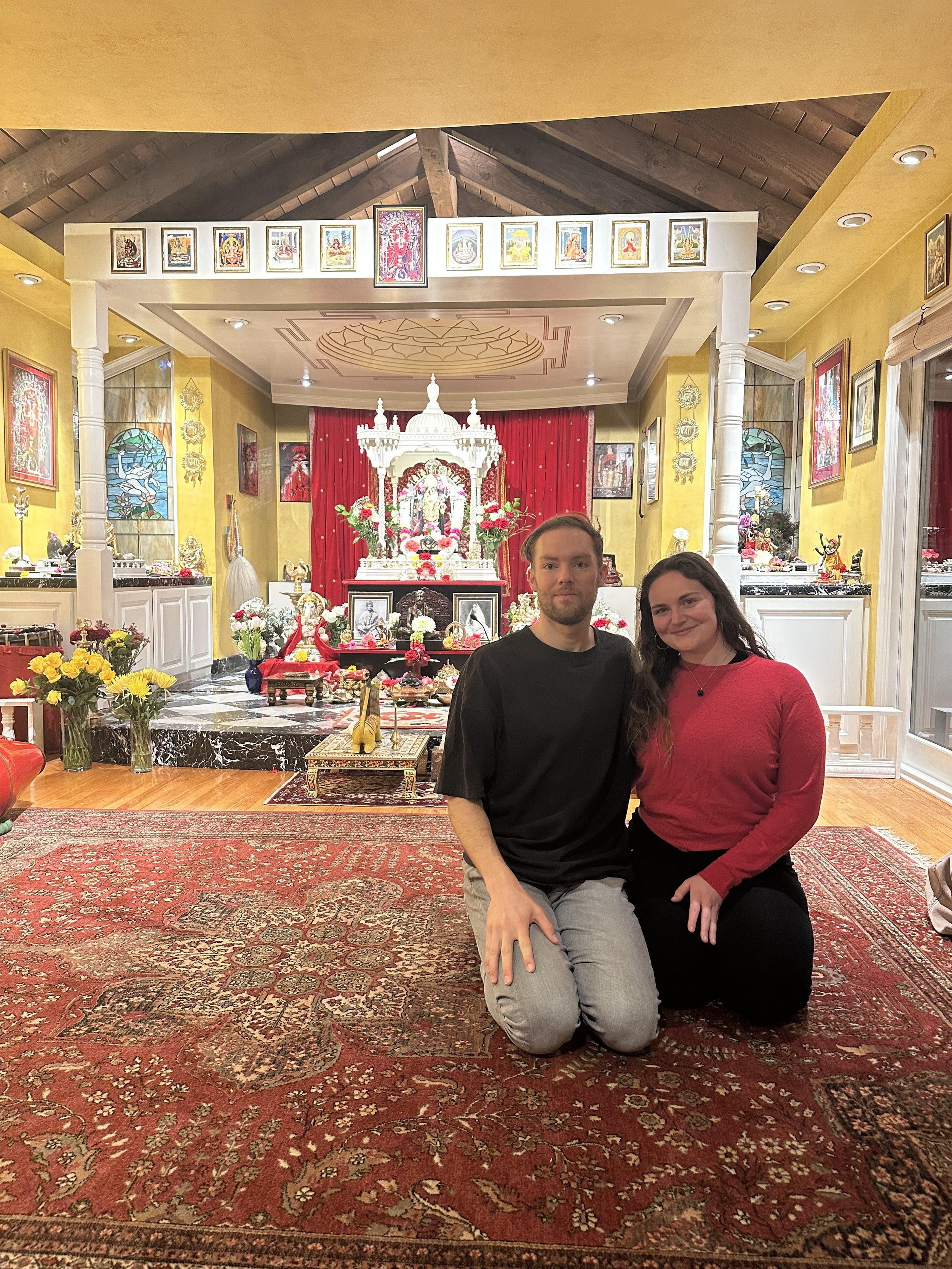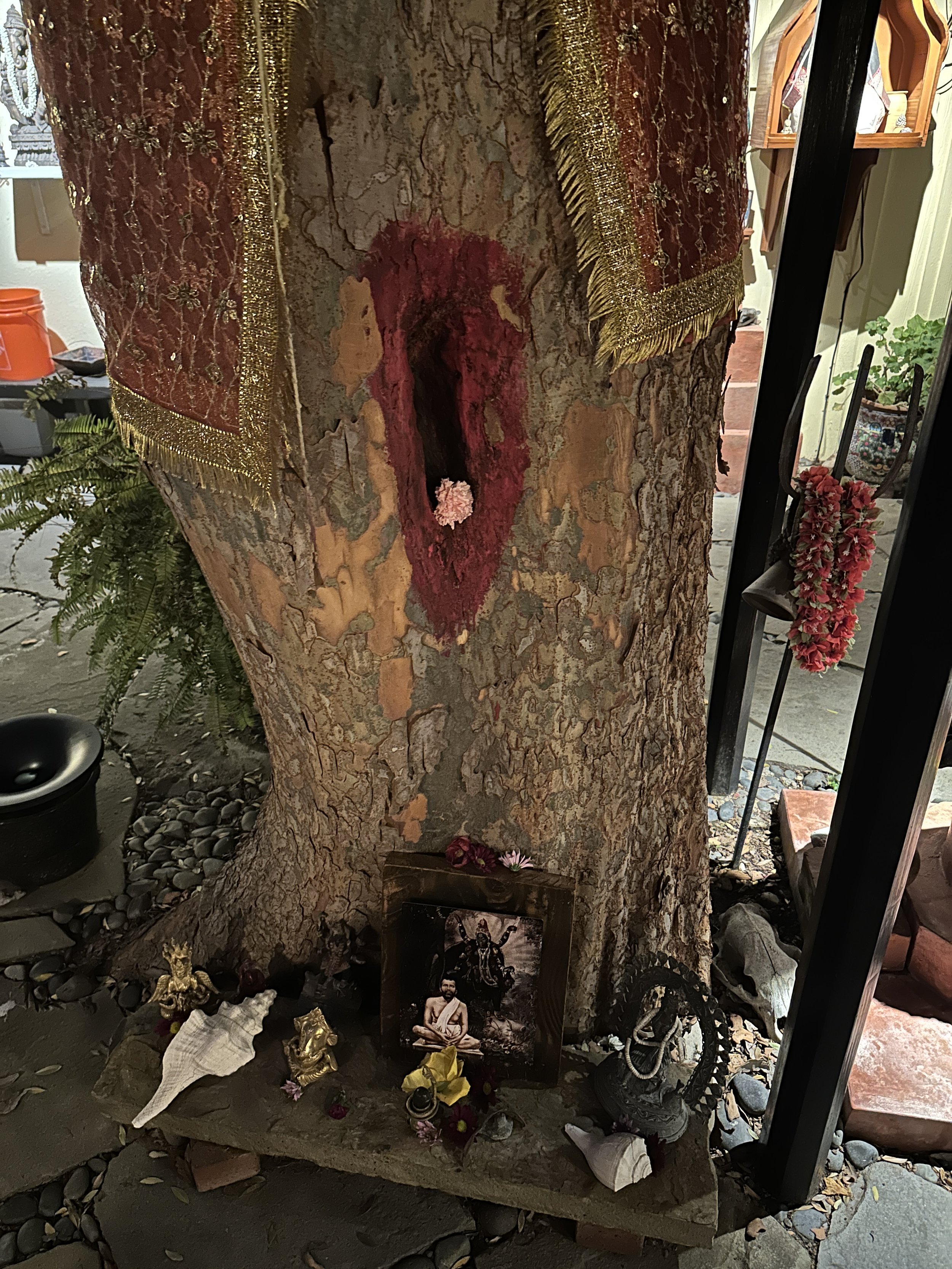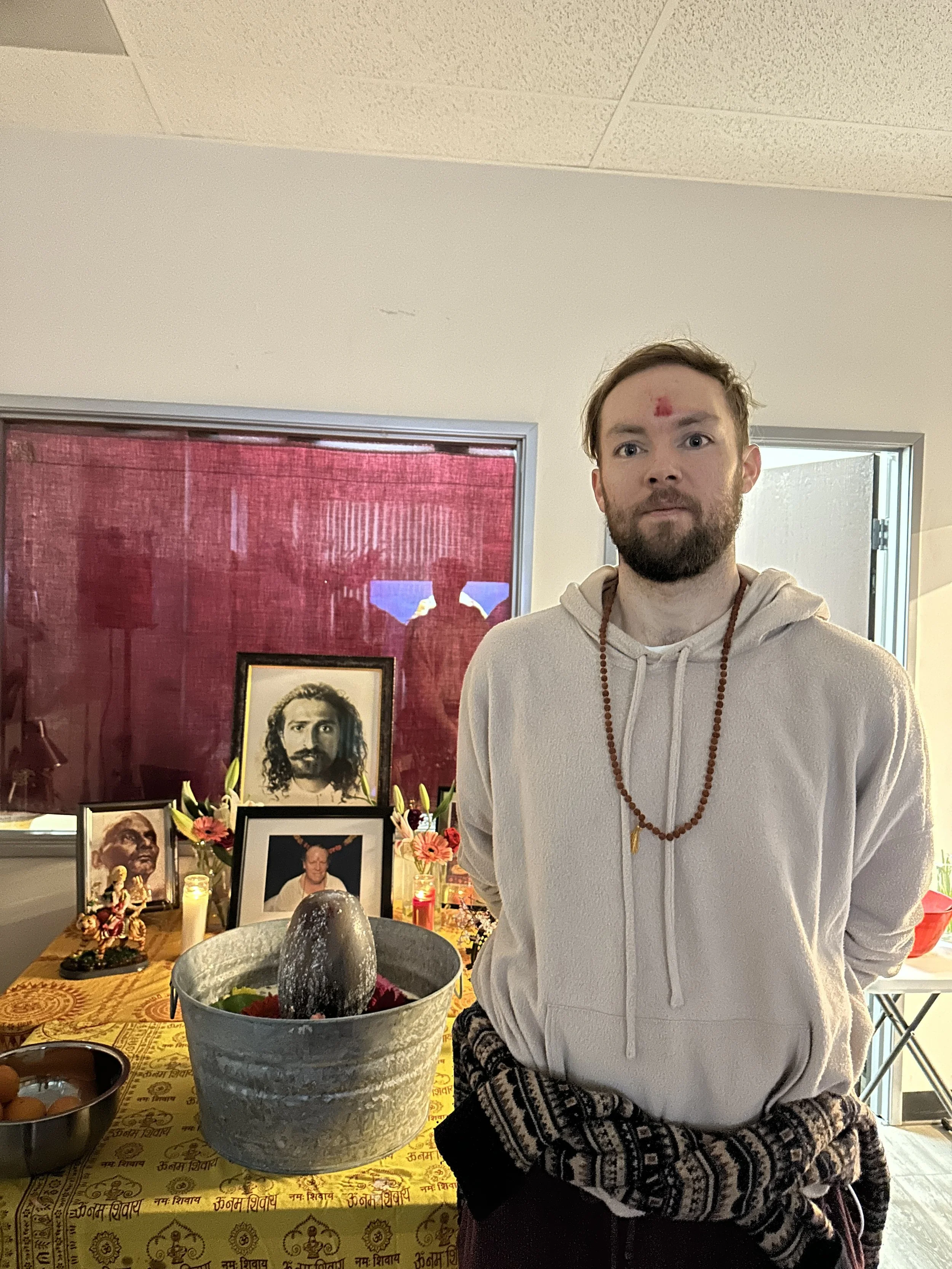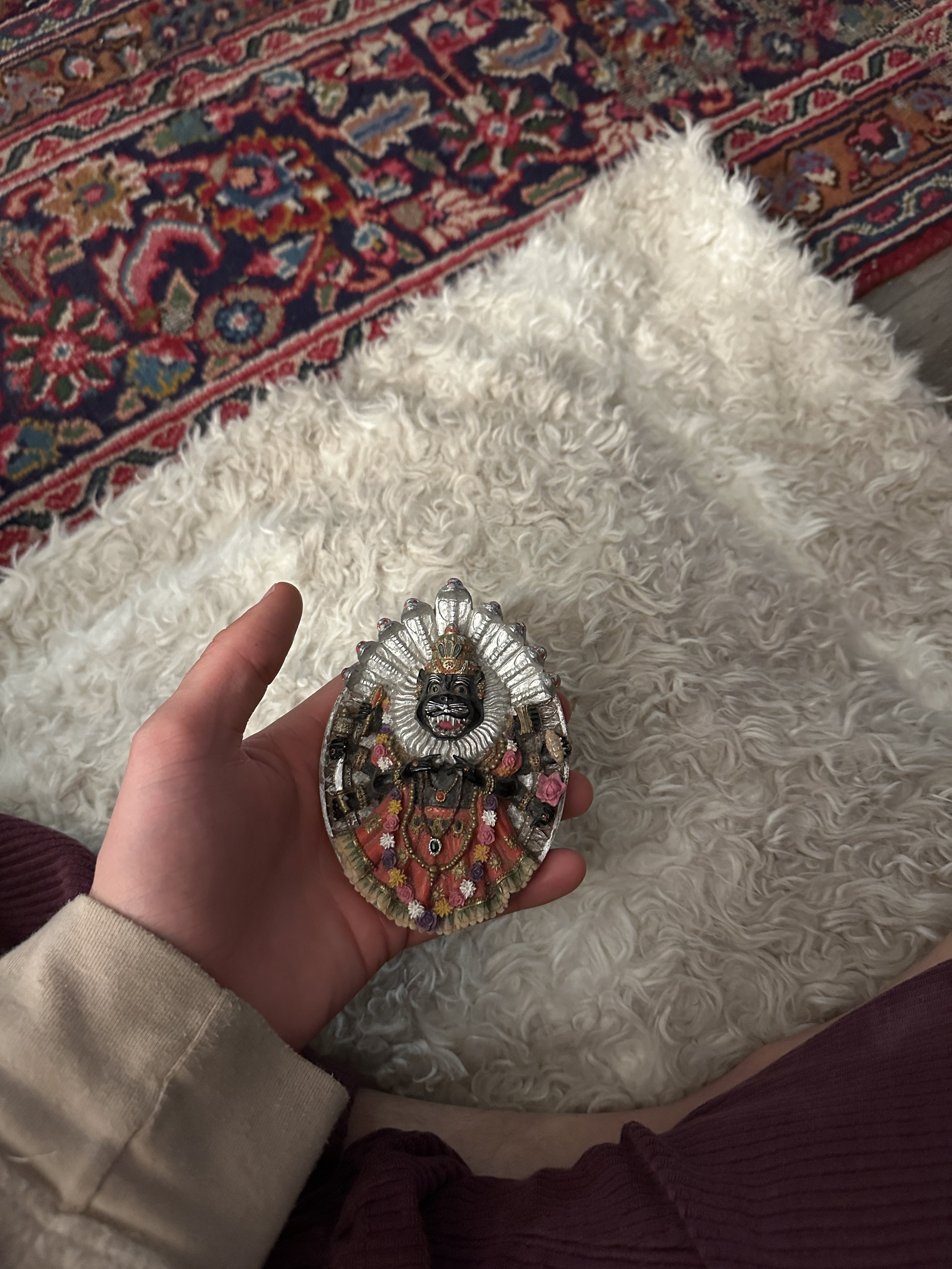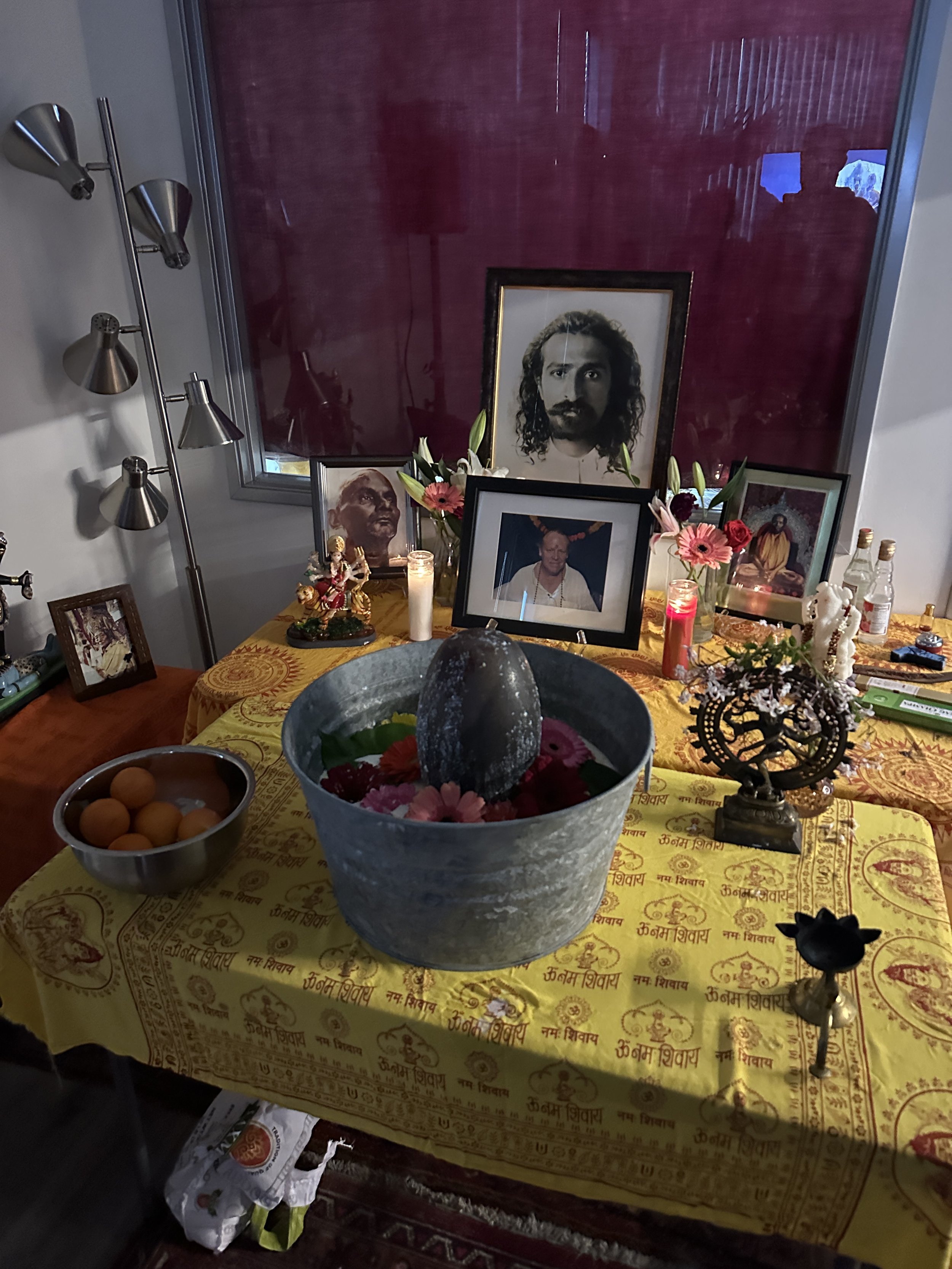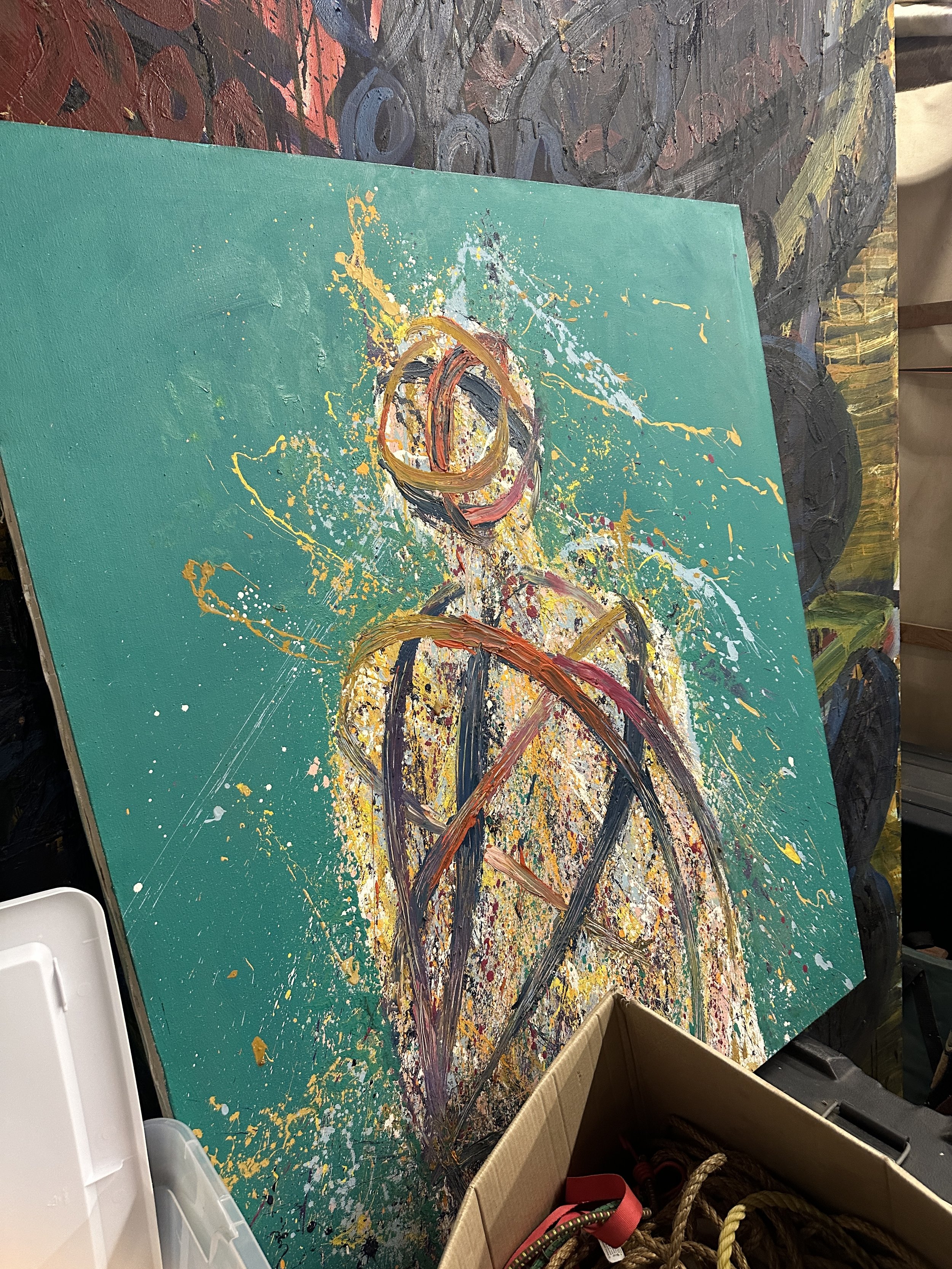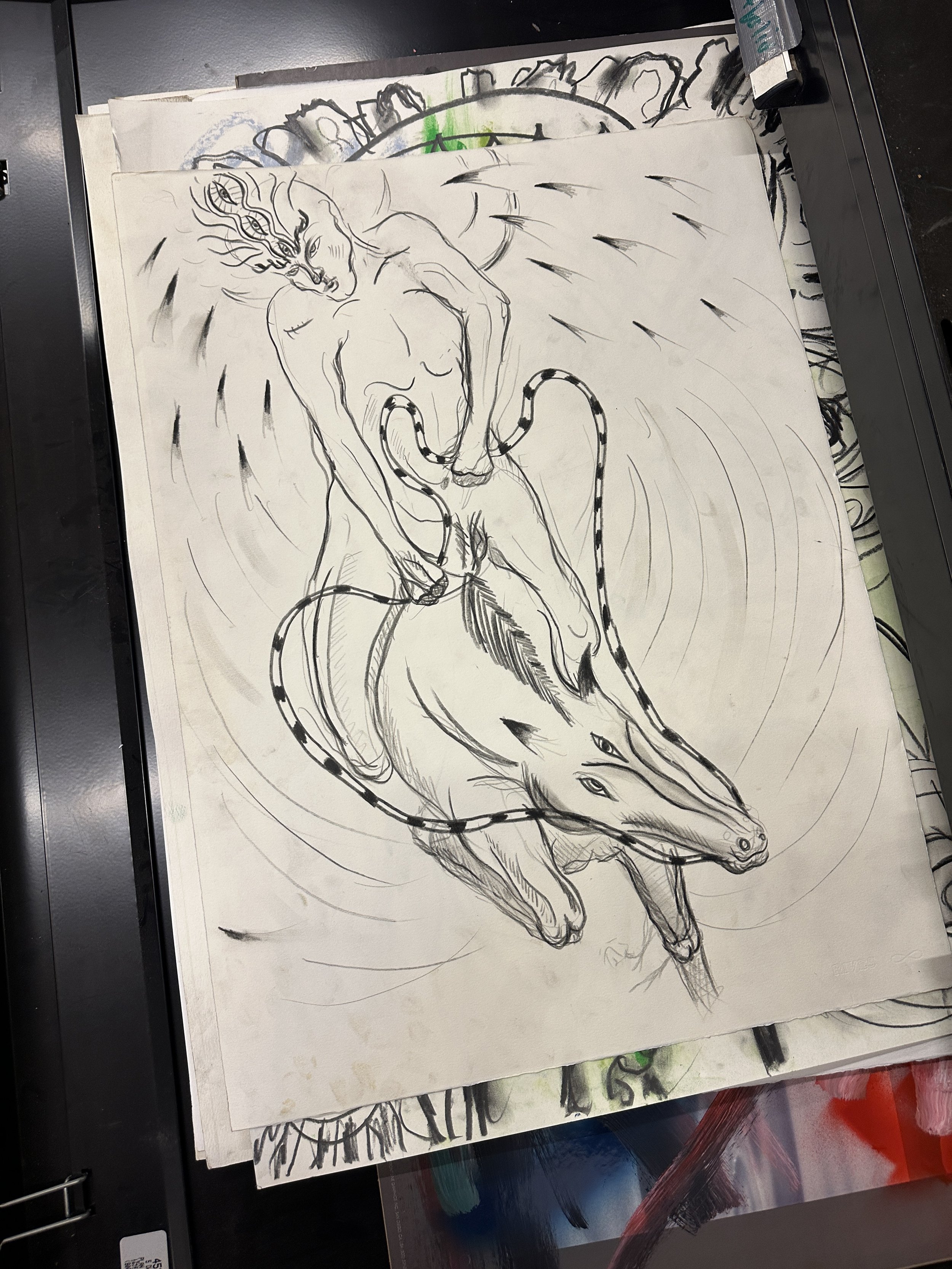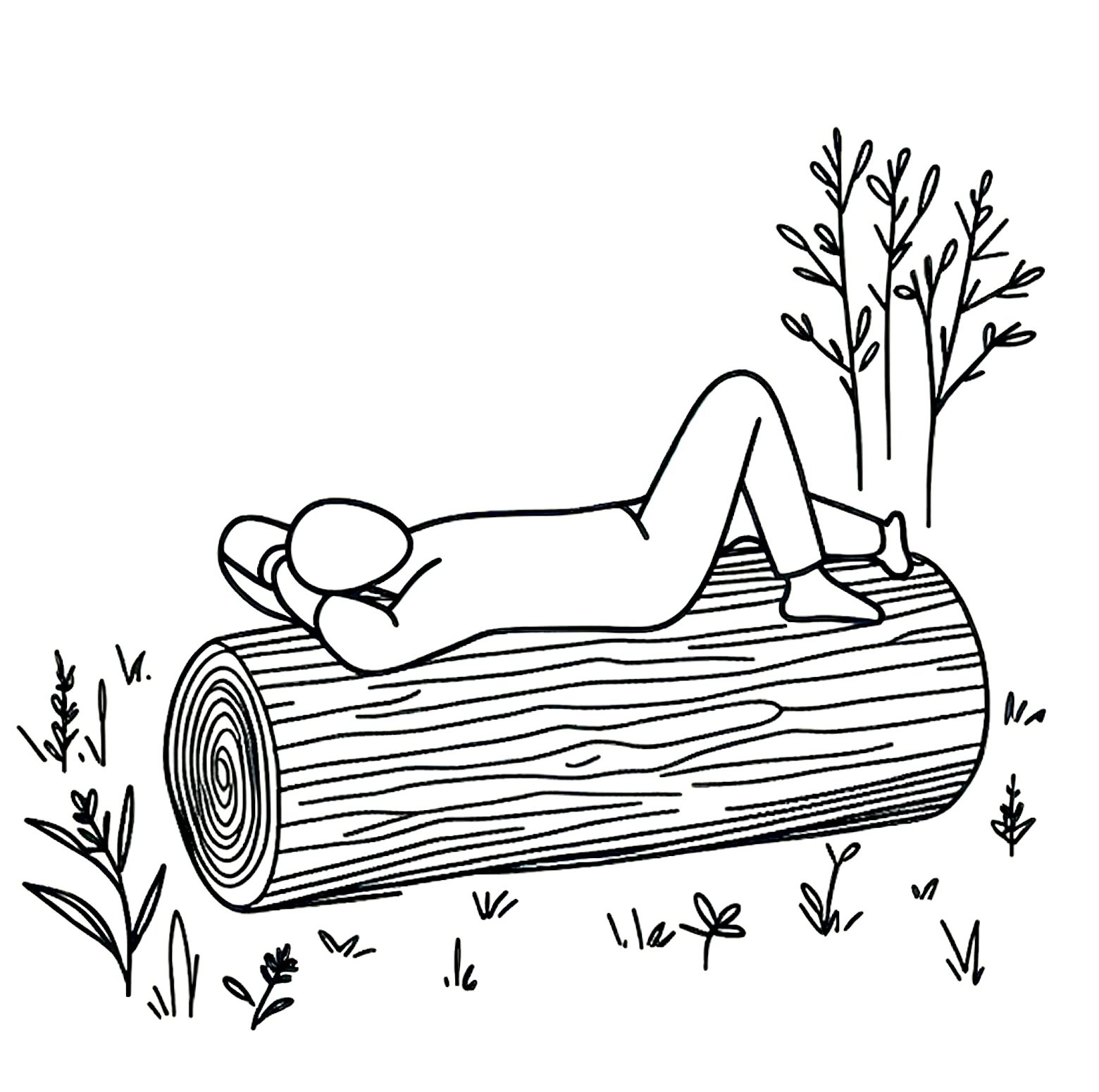Your Custom Text Here
The Power of a One-Minute Pause: Micro-Meditations for a Busy Da
You don’t need 30 minutes of silence to experience the benefits of meditation. In this post, we explore the power of micro-meditations—simple one-minute practices you can use anytime during the day to reset your mind and reconnect with yourself.
Life moves fast. Between work emails, errands, texts, and to-do lists, it’s easy to feel like there’s no time to breathe—let alone meditate.
But mindfulness doesn’t have to mean sitting on a cushion for 30 minutes in complete silence. In fact, sometimes all it takes is one minute to shift your energy and reset your mind.
Welcome to the world of micro-meditations—quick, intentional pauses that help you reconnect with the present moment, no matter how busy your day may be.
What Is a Micro-Meditation?
A micro-meditation is exactly what it sounds like: a short meditation you can do in 30 to 120 seconds. It's not about duration—it’s about dropping into presence, even briefly.
These bite-sized practices are perfect for moments when you feel frazzled, reactive, or scattered. Rather than trying to “push through” stress, you pause, breathe, and reconnect.
Think of it as a mini reset button for your nervous system.
Why Micro-Meditations Work
Even a short mindful pause has the power to:
Calm the nervous system
Help you respond rather than react
Restore a sense of clarity and perspective
Bring you back into your body and breath
In a world that moves fast, stillness becomes a radical act of care—even if it only lasts 60 seconds.
5 Micro-Meditations to Try Today
You don’t need a special setting or equipment—just a moment of your attention.
1. One-Minute Breath Reset
Inhale for 4 counts, exhale for 6. Repeat this for one full minute. Let each breath guide you back to center.
2. Mindful Body Scan
Close your eyes and slowly bring awareness from the crown of your head to the soles of your feet. Just notice what you feel, without judgment.
3. Sound Awareness Pause
Sit or stand still and tune into the sounds around you—traffic, birds, buzzing electronics, your breath. Let them wash over you without labeling or reacting.
4. Hand-to-Heart Grounding
Place one hand on your chest, one on your belly. Take three deep breaths. Feel the warmth of your hands and the rhythm of your breath.
5. Visual Stillness
Gaze gently at a tree, candle, flower, or sky. Let your attention rest there without needing to analyze. Just observe.
When to Use Micro-Meditations
There’s no wrong time, but here are a few moments that work especially well:
Before a difficult conversation or meeting
Between work tasks to prevent burnout
After receiving frustrating news
During a transition (like coming home from work)
As a mid-day reset when your energy dips
Each pause is a small act of mindfulness—and those small acts add up.
Closing Thoughts
You don’t need a perfectly quiet room, a fancy cushion, or even ten free minutes to meditate. You just need a breath and a moment.
Start by picking just one micro-meditation from this list and try it today—maybe right now. These quick resets will help you carry more calm, clarity, and presence throughout the rest of your day.
Want to Stay Present Even on Your Busiest Days?
Short on time but want to stay consistent with your meditation goals? The Journey Through Meditation ebook includes simple, realistic techniques—perfect for weaving mindfulness into even your busiest days. Grab your copy here.
Together on the Trail: Finding Community in Nature
Every Saturday, I’ve made it a ritual to hike the trails near the retreat center in Topanga. This week, I was joined by a group of retreat guests—and the experience reminded me how powerful it can be to walk through nature with others. From quiet conversation to shared silence, the trail became a space for community, reflection, and vision. In this journal post, I reflect on the magic of hiking in groups and the quiet way nature helps us return to ourselves.
Over the past few weeks, I’ve been making a ritual out of going on hikes every Saturday. It’s become one of my favorite ways to reset—good for the nervous system, the spirit, and my relationship with the land around me. Given that I live at a retreat center surrounded by mountains, there’s hardly an excuse not to take advantage of what’s just outside the door.
There’s a trail just up the road from the retreat center that I’ve come to love. The walk begins with a steady climb up a residential road, past homes etched into the hillside. Eventually, the pavement ends and a dirt path takes over, opening up to sweeping canyon views. As you walk a little further, you're surrounded on all sides by mountains and open sky. It’s the kind of space that instantly slows your breath and widens your perspective.
Hiking in Community
This past Saturday, I wasn’t alone. I was joined by a group of retreat guests—people I hadn’t met before, but with whom I quickly felt a sense of shared presence. There’s something uniquely connective about hiking with others. Conversation rises and falls naturally, often giving way to comfortable silences where just the sound of footsteps and wind feels like enough.
We didn’t have to “do” much. The act of walking together, side by side under the open sky, created a subtle sense of trust and community. At times we chatted, other times we just gazed out across the hills, taking in the vastness. It was a reminder that shared experience doesn’t always need words—sometimes presence is the most powerful connector.
Seeding a Vision
Though I haven’t formally started leading hikes or offering meditation events here at the retreat center, experiences like this one remind me I’m already walking the path. Each shared hike, each moment of connection out in nature, feels like a step toward something I’m actively building.
In the near future, I’d love to offer guided group hikes and meditative nature experiences—maybe even through an Airbnb Experience. For now, I’m grateful for these spontaneous moments that allow me to embody that vision in real time, and begin cultivating the kind of offerings I hope to share more widely.
Nature Does the Heavy Lifting
One of the things I’m always struck by when hiking—alone or with others—is how effortlessly the natural world facilitates transformation. You don’t need a complicated plan or a special technique. You just have to show up.
The hills, the breeze, the rhythm of your footsteps—they all do the work of settling the nervous system, opening the heart, and reconnecting you to something greater. You come as you are, and the land meets you there.
A Quiet Affirmation
As we returned from the hike and the sun began to lower over the canyon, I felt quietly affirmed. The ritual of hiking, especially with others, has a way of reinforcing what matters: simplicity, connection, movement, and presence.
These hikes remind me that there’s power in simply showing up—for ourselves, for one another, and for the land. And sometimes, walking a trail with a group of strangers can feel like exactly what the soul needed.
What to Do When Your Meditation Practice Feels Boring
Boredom in meditation is more common than you think—and it doesn’t mean your practice is failing. In this post, we explore how to use boredom as a doorway to deeper presence and offer subtle shifts to keep your routine feeling fresh, even when it gets repetitive.
At some point, nearly everyone who meditates hits a wall.
You sit down, close your eyes, take a breath—and… nothing. The calm that once felt fresh now feels flat. You’re not exactly resisting the practice, but you’re definitely not excited about it either. If this sounds familiar, you're not alone.
Boredom is part of the path.
Whether you're new to meditation or have been practicing for years, it's natural to lose interest or feel like your sessions are becoming repetitive. But boredom isn’t a sign that something’s gone wrong. In many cases, it's actually a sign that you’re getting closer to something deeper.
Let’s explore why boredom shows up, how to relate to it with curiosity, and a few small shifts that can help reinvigorate your practice.
Boredom = Resistance to the Present Moment
Boredom in meditation often arises when there’s nothing flashy going on—no insights, no intense emotions, no newness. Just breath, stillness, and space.
But underneath boredom is usually a subtle resistance to simply being. We’re so used to stimulation, multitasking, and movement that when nothing “happens,” we interpret it as unproductive or uninteresting.
This is where the real opportunity lies.
Staying with boredom—rather than fighting it or running from it—is how we develop patience, presence, and deep awareness. It’s not exciting, but it’s transformational.
Small Shifts That Can Reinvigorate Your Practice
If your practice has grown stale, try one or more of these subtle tweaks. You don’t need a major overhaul—just a fresh lens.
1. Change Your Meditation Spot
Sometimes a new environment can breathe life into your routine.
Try a spot near a window, outside, or in a different room.
Let nature become part of your practice—birdsong, sunlight, breeze.
Even small changes in surroundings can bring your senses online in a new way.
2. Shift the Time of Day
If you always meditate in the morning, try it in the evening—or vice versa.
Morning meditation sets your tone.
Evening meditation helps you unwind.
Midday breaks can be powerful reset points.
Changing when you meditate can shift your energy and your relationship to the practice.
3. Experiment with a New Focal Point
If you always focus on your breath, try:
Sound (ambient or a simple bell tone)
A mantra or phrase
Body scan or sensations
An image or candle flame (eyes open)
Giving your attention a new anchor can reawaken curiosity.
4. Shorten or Lengthen Your Session
Sometimes we outgrow a certain duration.
Try a shorter sit with more presence, or a longer one that allows for deeper settling.
Even just 3–5 minutes of real focus can be powerful.
It's not about duration—it’s about depth.
5. Journal After Your Sit
Even if it feels like “nothing happened,” take a moment to jot down what you noticed.
What emotions came up?
Was there restlessness? Stillness? Boredom?
What did you learn about your mind?
Journaling helps you reflect and see growth over time.
Use Boredom as a Mirror
If your practice feels boring, ask: What part of me wants to skip this? What am I hoping will happen?
Meditation isn’t about achieving a particular feeling—it’s about relating differently to whatever shows up. When boredom is present, stay curious. What’s beneath it? What happens if you simply breathe and allow it to be?
That’s where insight often lives.
The Breakthrough Is on the Other Side
If you can stay present with boredom, you’ll find that it begins to change. Not because you forced it to, but because you stopped resisting it.
In many ways, boredom is just your mind adjusting to the quiet—and the more you practice, the more comfortable that quiet becomes.
So don’t worry if your meditation feels stale. That, too, is part of the journey. Try a few gentle shifts, stay with your breath, and trust that transformation doesn’t always feel dramatic—it often feels like nothing at all.
Want Support Staying Consistent (Even When Practice Feels Stale)?
The Journey Through Meditation ebook offers journaling prompts and simple daily techniques to help you build a practice that evolves with you. It’s designed to keep you connected, curious, and grounded—even when the practice feels quiet or uneventful. Grab your copy here.
Can’t Sit Still? Try These Alternative Meditation Positions
You don’t have to sit cross-legged to meditate. In fact, forcing yourself into uncomfortable positions can be more distracting than helpful. This post offers five alternative meditation positions—like walking, standing, and lying down—that support your body and make your practice more accessible, especially when sitting still isn’t an option.
When most people picture meditation, they imagine someone sitting cross-legged with eyes closed and hands resting gently on their knees. And while that’s a perfectly valid way to practice, it’s far from the only way.
If sitting still feels uncomfortable, distracting, or even painful—you’re not alone. The good news? Meditation doesn’t require you to sit in a particular way or even be completely still. What matters most is your presence, not your posture.
Let’s break free from the traditional mold and explore alternative meditation positions that support your body and help you stay focused—without the fidgeting.
Why Traditional Postures Don’t Work for Everyone
There are many reasons sitting still might not feel right for you:
You have tight hips or back pain.
You’re recovering from an injury or illness.
You experience anxiety or restlessness that makes stillness hard.
You’re new to meditation and still figuring out what works best.
Whatever the reason, don’t let it stop you. The most effective meditation position is the one you can relax into.
1. Sitting in a Chair (For Comfort and Support)
Forget the floor if it doesn’t work for your body. A simple upright chair can be a perfect meditation seat.
Sit with your feet flat on the floor and hands resting on your thighs.
Keep your back straight but relaxed—use a cushion or rolled towel if needed.
You can even close your eyes and place your hands over your heart or belly for grounding.
Best for: Office workers, seniors, or anyone needing back support.
2. Lying Down (For Restful Awareness)
Lying on your back—also known as corpse pose or savasana—can be deeply restorative.
Place a small pillow under your knees or head for comfort.
Let your arms rest at your sides with palms up.
Focus on your breath or body scan, letting tension melt away.
Caution: This position may lead to sleep. That’s okay—just try to remain aware if possible.
3. Standing Meditation (For Alert Stillness)
Rooting yourself into the ground can be powerful, especially if you’re feeling tired or stagnant.
Stand with feet hip-width apart and knees slightly bent.
Let your arms hang naturally or place your hands gently over your belly.
Feel your connection to the earth and breathe slowly.
Great for: Midday resets or when you’re in transition and need grounding.
4. Walking Meditation (For Restless Energy)
Walking meditation transforms movement into mindfulness.
Walk slowly and deliberately, noticing each step, breath, and sensation.
Focus on the feeling of your feet touching the ground or the rhythm of your breath.
You can practice in a quiet room, garden, or on a familiar path outdoors.
Ideal for: People who feel too restless to sit still or want a meditative walk in nature.
5. Reclining (For Pain Relief or Fatigue)
If sitting or lying flat isn’t comfortable, try reclining slightly.
Use pillows to support your knees, neck, or hips.
Focus on your breath or body sensations.
This position is also excellent for evening meditations before bed.
Why it works: Gentle and supportive for those with chronic pain or fatigue.
Which One Is Right for You?
There’s no “perfect” posture in meditation—only the one that supports your practice, your body, and your moment.
Try asking yourself:
Where do I feel the most grounded?
Can I breathe easily and stay present in this position?
Does this posture invite comfort rather than distraction?
You can also switch positions depending on the time of day or how your body feels. Morning seated meditation, afternoon walking meditation, or evening lying-down meditation? Totally up to you.
Comfort Leads to Consistency
You don’t need to force yourself into uncomfortable stillness to meditate “the right way.” When your body feels supported, your mind can relax more easily—and that’s where meditation really begins.
Try one of these alternative positions today and notice how it shifts your experience. The most important thing is that you show up—with presence, curiosity, and compassion for yourself.
Want More Support in Building a Practice That Works for You?
The Journey Through Meditation ebook includes flexible techniques, journaling prompts, and guidance to help you create a meditation practice that fits your body and your life. Whether you sit, stand, or walk, this ebook is your companion for making meditation sustainable and meaningful.
Get your copy here.
The Mindful Commute: Turning Travel Time into a Meditation Practice
Most people treat commuting as wasted time—but it doesn’t have to be. Whether you’re behind the wheel, riding the bus, or walking to work, your daily travel can become a mindfulness practice. This post explores how to bring presence and intention into your commute and why those in-between moments may be the perfect time to meditate.
Most of us don’t think of our commute as sacred time. Whether you're sitting in traffic, riding a packed train, biking through the city, or walking to work, commuting is usually treated as something to endure, not embrace.
But what if that travel time could become part of your mindfulness practice?
Rather than checking out, dreading delays, or rushing through it with earbuds on full blast, your commute can be an opportunity to connect with the present moment, steady your breath, and transition into or out of your day with more calm and clarity.
Let’s explore how to transform your commute—however you get around—into a meaningful, meditative experience.
Why the Commute Is a Hidden Opportunity
Commuting is one of the few times in our day where we’re already in motion but not expected to multitask. That makes it ideal for simple, grounded mindfulness.
Instead of using it as a time to zone out or worry about what’s ahead, you can use it to tune in—to your breath, your senses, and your surroundings. This shift doesn’t just make commuting more pleasant—it helps regulate stress and create mental space between work and home life.
And best of all: you don’t need to sit in lotus pose to do it.
Mindful Practices for Every Commute Type
Let’s look at a few common commuting scenarios…
Driving (or Ride Shares)
You might not think of driving as meditative, but it can be—when done with presence and intention.
Drop into your body: Notice your hands on the wheel, your seat beneath you, your feet on the pedals.
Sync with your breath: Match the rhythm of your breathing to your movements—inhale as you turn, exhale as you straighten.
Observe, don’t judge: When traffic gets frustrating, use it as a cue to return to your breath or relax your shoulders.
Tip: Turn off talk radio or heavy news. Try silence, calming music, or a short mindfulness audio instead.
Public Transit (Train, Subway, Bus)
Public transit offers a unique opportunity to practice stillness in motion—especially if you’re seated.
Anchor to your breath: Let the rhythm of the ride cue your inhales and exhales.
Sensory meditation: Instead of scrolling, focus on sounds, sights, or sensations around you—without reacting to them.
Soft gaze or closed eyes: If it feels safe, rest your eyes and tune inward. You can even repeat a silent mantra or calming phrase.
Tip: Try bringing a small object to hold—a mala bead, a smooth stone—to ground your attention.
Walking or Biking
Movement-based mindfulness is perfect for commuters on foot or on wheels.
Feel each step or pedal: Tune into the rhythm of your body moving through space.
Let go of rushing: Walk or ride at a comfortable pace, breathing naturally and noticing your surroundings.
Notice nature: Trees, light, birdsong, air on your skin—these are natural meditative anchors.
Tip: Skip the headphones once in a while and let your environment guide your focus.
How to Stay Present Without Forcing It
You don’t need to be perfectly focused for your commute to be mindful. Some days, your mind will wander—and that’s okay. The point is to notice when it does and gently bring your attention back to the present.
Here are a few grounding cues to help:
“What can I feel right now?” (seat, shoes, breath)
“What sounds do I hear?” (train hum, wind, traffic)
“What’s the rhythm of my breath?”
“Can I relax my jaw, shoulders, or hands?”
Over time, these check-ins become habits—and your commute becomes a ritual of reconnection.
Make the Journey the Practice
You don’t need a cushion or candle to meditate. Sometimes, the most ordinary spaces—like your car, your sidewalk, your bus stop—can become places of peace.
The next time you're in motion, try making your commute a practice in presence. Instead of fighting the rush, slow down internally, breathe with awareness, and notice how different your day feels.
Want More Everyday Mindfulness Practices?
The Journey Through Meditation ebook offers simple mindfulness tools and journaling prompts that fit into real-life routines—including the moments in between. If you're looking to turn ordinary parts of your day into sacred pauses, this book is a perfect place to begin. Get your copy here.
Stillness in the Canyon: A Meditative Hike Along the Backbone Trail
I recently hiked the Backbone Trail in Topanga, one of my favorite trails for its long, winding beauty and hidden corners of peace. Midway through, I paused at a rock overlook above a small gorge—where a trickling stream forms pools full of dragonflies and frogs. I meditated by the water, imagining what it might be like to be a cave yogi tucked away in silence. This journal entry captures the magic of that day: the quiet, the reflections, and the grounding energy of the land.
This weekend, I took one of my favorite hikes in Topanga—the Backbone Trail. It’s a long and winding route that weaves through groves of old trees, over rocky ridges, and past wide canyon views. Though I rarely make it all the way to the top (the descent becomes a bit much), the halfway point has become my usual destination—and one that always rewards the effort.
The trail starts just off the roadside, where you immediately cross a small, babbling brook—a gentle invitation to slow down and step out of everyday life.
As the trail ascends, the land opens up into grassy meadows—quiet now, but soon to bloom with wildflowers. California poppies will soon scatter the hillsides with their bright orange glow. Spring is almost here, and it shows in the subtle shifts: a touch more green, a hint of fragrance in the air, and a sense of expectancy hanging over the land.
From there, the path winds through alternating stretches of shaded woodland and open scrub, each turn revealing more of the surrounding canyon and its scattered homes, some so remote they seem to hover between this world and another. I often wonder how roads manage to reach them at all.
The Hidden Pools Beneath the Overlook
About halfway up the trail, I stop at a wide rock outcropping that offers a dramatic view of the gorge below. Just beneath the overlook is a small stream trickling down the canyon, forming little pools in the rocks—natural watering holes sculpted by time.
One pool in particular, no bigger than a bathtub but surprisingly deep, has become a quiet sanctuary for me. On warmer days, I’ll slip into the water, rinse away the heat of the climb, and then lay out on the sun-warmed rocks to dry. There’s something elemental about it—part myth, part memory.
Sometimes I imagine the pools are enchanted, like portals to hidden caves or realms just beyond our reach. Maybe they’re inhabited by mermaids on the astral plane or guarded by mountain spirits watching from the trees.
But even without fantasy, the pools are alive. They’re breeding grounds for dragonflies—tiny ones still developing, floating delicately on the water’s surface. Frogs live here too. One joined me recently, hopping close while I meditated by the stream. We sat quietly together for a while, sharing space.
A Place of Solitude and Stillness
This part of the canyon has become my meditation spot—a hidden nook that feels removed from time. Nestled between stone and water, shaded by brush and open sky, it offers something rare: silence that doesn’t feel empty.
Away from the demands of daily life, it’s easier to settle into meditation. There’s less noise in the mind when the external world quiets down. The gentle gurgle of the stream, the occasional chirp of a bird or croak of a frog, even the wind slipping through the gorge—all of it creates a rhythm the mind can soften into.
When I sit here, I get a small taste of what it might be like to live as a cave yogi—tucked away in the hills, beyond the pull of the world, watching thoughts like clouds float by. It’s a reminder that peace is often just a short hike away.
Descent at Dusk
I usually stay until just before sunset. As the sun dips low, the canyon cools quickly, and I reach for my sweater. The light softens, the shadows stretch, and the world takes on a kind of quiet magic.
Then, I begin the journey back down the trail—refreshed, grounded, and grateful.
How to Meditate When You’re Anxious
Meditation is one of the best ways to calm anxiety—but what if sitting still feels impossible? Instead of forcing traditional meditation, try approaches designed for anxious moments, like mindful breathing, movement-based meditation, and grounding techniques. Here’s how to make meditation easier when your mind won’t slow down.
Meditation is often recommended for anxiety, but when you're feeling overwhelmed, sitting still with your thoughts can seem impossible. The restless energy, racing mind, and physical discomfort that anxiety brings can make traditional meditation feel frustrating or even counterproductive.
Yet, meditation is one of the most effective tools for calming the nervous system—even when it feels difficult. The key is to approach meditation differently when you're anxious, using techniques that meet you where you are rather than forcing stillness.
Why Meditate When You’re Anxious?
A few reasons…
It Shifts Your Nervous System from Fight-or-Flight to Calm
Anxiety activates the sympathetic nervous system, which prepares your body to respond to perceived danger (increased heart rate, rapid breathing, tense muscles).
Meditation engages the parasympathetic nervous system, the “rest and digest” state that calms the body and mind.
It Creates Space Between You and Your Thoughts
Anxiety thrives when we believe every thought we have.
Meditation helps you observe anxious thoughts without getting caught up in them, making them feel less overwhelming.
It Teaches You to Sit with Discomfort Without Reacting
Anxiety often comes with a sense of urgency, making you feel like you must "fix" or "escape" the feeling.
Meditation teaches you to acknowledge and allow anxiety to exist without resistance, which reduces its intensity over time.
It Builds Long-Term Resilience to Stress
Regular meditation strengthens emotional regulation, making future anxiety episodes feel more manageable.
The more you practice, the easier it becomes to remain calm even in difficult moments.
How to Meditate When Anxiety Feels Overwhelming
Anxious energy can make traditional seated meditation challenging, so consider modifying your practice with these approaches:
1. Try a Grounding Breath Exercise First
If sitting in silence feels too difficult, start with a breathing technique to anchor yourself in the present:
4-7-8 breathing: Inhale for 4 seconds, hold for 7, exhale for 8. This slows the heart rate and relaxes the nervous system.
Box breathing: Inhale for 4, hold for 4, exhale for 4, hold for 4. This helps regulate an anxious mind.
Taking a few minutes to regulate your breath prepares your body for meditation and makes it easier to settle in.
2. Use Movement-Based Meditation
Sitting still can intensify restlessness, so if that’s the case, try meditating while in motion:
Go for a slow, mindful walk, paying attention to each step and breath.
Practice gentle yoga or stretching, focusing on how your body feels.
Rock back and forth slightly or sway—small repetitive movements can be soothing.
Movement can help release excess energy, making it easier to transition into a calmer state.
3. Focus on External Sensations Instead of Your Thoughts
When anxiety makes inner stillness difficult, turn your attention outward:
Listen to ambient sounds like birds chirping, rain falling, or soft instrumental music.
Hold an object (like a stone or blanket) and focus on its texture, weight, and temperature.
Light a candle and watch the flickering flame as a point of focus.
Engaging the senses grounds you in the present moment and reduces mental overwhelm.
4. Use a Guided Meditation
Trying to meditate alone when anxious can feel overwhelming. Instead, let someone else lead you through the process with a guided meditation.
Apps like Insight Timer or Calm offer free meditations designed for anxiety relief.
Guided body scan meditations can help relax physical tension.
Hearing a calming voice can make it easier to stay present and shift focus away from anxious thoughts.
5. Let Go of the Idea That Meditation Must Feel “Peaceful”
One of the biggest obstacles to meditating with anxiety is the expectation that you should feel instantly calm. Meditation doesn’t mean eliminating anxiety—it’s about learning to sit with it without resistance.
Even if your mind stays busy, or you feel restless, simply showing up is progress. Over time, these small moments of awareness add up, making anxiety less overpowering.
Meditation Is Worth It, Even When It Feels Hard
Meditating when you’re anxious isn’t about forcing stillness—it’s about meeting yourself where you are. Whether you choose mindful breathing, movement, external focus, or guided meditation, the goal is to create space for your experience without judgment.
Over time, meditation can rewire your relationship with anxiety, helping you feel more grounded, resilient, and at ease in everyday life. So next time anxiety strikes, try one of these approaches and see how it shifts your experience.
Want More Support for Your Meditation Journey?
If you’re looking for guided meditation techniques, journaling prompts, and tools to help you stay present—even during anxious moments—the Journey Through Meditation ebook is for you. Get your copy here!
Why Your Evening Routine Needs Meditation (And How to Make It Happen)
The way you end your day affects how well you sleep and how you feel the next morning. If stress and racing thoughts keep you up at night, meditation can help you transition into a restful state. In this post, we explore why evening meditation is so powerful and how to easily incorporate it into your nightly routine.
How you end your day shapes the quality of your sleep, your stress levels, and even how you feel the next morning. But for many people, unwinding at night isn’t so simple. Work stress lingers, screens keep the brain overstimulated, and racing thoughts make it hard to relax.
Evening meditation is one of the easiest ways to shift into relaxation mode, preparing both the mind and body for deep, restorative sleep. If you’ve struggled with sleep, stress, or an overactive mind at night, incorporating meditation into your evening routine can be a game-changer.
In this post, we’ll explore the power of nighttime meditation, why it’s so effective, and simple ways to make it a part of your nightly wind-down.
Why Evening Meditation Is So Powerful
As the day winds down, meditation helps signal to your mind and body that it’s time to shift into rest mode.
1. Signals to Your Brain That It’s Time to Unwind
Your brain thrives on routine. When you introduce a nightly meditation practice, it becomes a cue that the day is ending, signaling your body that it’s time to relax. Just like brushing your teeth before bed, a short meditation session can help transition you into sleep mode.
With so much artificial stimulation from screens and stressors, meditation is a simple way to counteract these distractions and encourage deep rest.
2. Reduces Stress and Anxiety
If stress and worry keep you up at night, you’re not alone. The mind tends to replay the events of the day, analyze conversations, or anticipate what’s coming tomorrow.
Meditation interrupts this cycle by helping you let go of the day’s stress. Studies show that regular meditation reduces cortisol levels, which can lower feelings of anxiety, calm the nervous system, and create a sense of peace before bed.
3. Improves Sleep Quality
Meditation doesn’t just help you fall asleep—it also improves the quality of your sleep. By engaging the parasympathetic nervous system (the “rest and digest” mode), meditation helps slow heart rate, deepen breathing, and prepare the body for deep sleep.
If you struggle with waking up in the middle of the night, meditation can also train your mind to return to sleep more easily instead of getting caught in restless thinking.
4. Enhances Self-Reflection and Gratitude
Evening meditation is also a great time for self-reflection and gratitude. Ending the day with a few mindful moments allows you to process emotions, acknowledge positive experiences, and shift your focus away from stress.
A gratitude meditation before bed can help you fall asleep with a lighter, more positive mindset, setting the stage for a better morning.
How to Make Evening Meditation a Habit
1. Create a Ritual Around It
The best way to make evening meditation stick is to pair it with something you already do. Try meditating:
After brushing your teeth—so it naturally becomes part of your bedtime routine.
After drinking tea or reading a book—a calming transition before sleep.
Right before lying down—especially if you want to use meditation to help you drift off.
Making meditation feel like a natural part of your nightly rhythm makes it much easier to maintain.
2. Start Small and Be Consistent
You don’t need to meditate for an hour before bed. Even 5–10 minutes is enough to shift your mind into a relaxed state. The key is consistency—regular practice trains your brain to associate meditation with rest and sleep.
3. Choose the Right Meditation Style
Not all meditation techniques are equally relaxing. Here are a few that work especially well for nighttime:
Body scan meditation – Helps release physical tension before sleep.
Breath-focused meditation – Slows the heart rate and quiets the mind.
Gratitude meditation – Encourages a positive mindset before bed.
Guided meditation – Great if you need help focusing or prefer audio guidance.
Experiment with different techniques and see what feels most effective for you.
4. Limit Stimulation Before Bed
To make meditation even more effective, reduce stimulating activities before bed.
Avoid screens (phone, TV, laptop) at least 30–60 minutes before meditation.
Dim the lights or light a candle to create a calming atmosphere.
Listen to soft music, nature sounds, or white noise to ease into relaxation.
A peaceful environment enhances the effectiveness of your practice.
5. Use Meditation as a Sleep Aid (If Needed)
If you have trouble sleeping, don’t stress about staying awake during meditation—you can practice right in bed. A gentle breathing or visualization exercise can help you drift off naturally, without the pressure of “getting it right.”
Make Meditation a Part of Your Nightly Wind-Down
A few minutes of meditation at night can completely shift how you feel before bed, improving relaxation, sleep quality, and overall well-being. By making meditation a part of your evening routine, you create a natural transition between the busyness of the day and the stillness of night.
Start small, stay consistent, and find the style of meditation that works best for you. The more you practice, the easier it becomes to end your day with peace, clarity, and deep rest.
Want to Build a Nightly Meditation Habit?
Make evening meditation effortless with the Journey Through Meditation ebook. This ebook offers guided techniques and journaling prompts to help you unwind and build a mindful nighttime routine. Get your copy here!
Quick & Effective Morning Meditation Hacks
Mornings can feel rushed, but a few mindful moments can transform your entire day. Whether you have time for deep breathing, intention-setting, or a quiet cup of tea, these simple morning meditation hacks help you feel more grounded, focused, and present. Try one tomorrow and see how it shifts your mindset!
Mornings set the tone for the entire day, and incorporating meditation into your morning routine can help cultivate a sense of calm, clarity, and intention. However, not everyone has time for a long, seated meditation practice before rushing out the door. Fortunately, meditation doesn’t have to be time-consuming to be effective.
In this post, we’ll explore simple, effective meditation hacks that fit into any schedule—whether you have 2 minutes or 20. These techniques will help you start your day feeling centered, mindful, and present without disrupting your morning routine.
The Benefits of Morning Meditation
Clears mental fog and boosts focus for the day ahead.
Reduces morning stress and anxiety, making transitions smoother.
Increases energy and intention, helping you move through the day with purpose.
Builds mindfulness habits, making it easier to stay present throughout the day.
Even a few minutes of mindfulness in the morning can help anchor your thoughts, regulate emotions, and enhance well-being.
Quick & Effective Morning Meditation Hacks
The following simple meditation techniques can help you feel more centered, focused, and ready for the day ahead.
1. 2-Minute Breath Awareness (For Busy Mornings)
If your mornings feel rushed, even two minutes of mindful breathing can make a difference.
Before getting out of bed, take a deep breath in through your nose and out through your mouth.
Focus on the rise and fall of your breath for just a couple of minutes.
If thoughts arise, gently bring your focus back to your breath.
This simple technique wakes up the mind gently, preventing the overwhelm that often comes from immediately checking phones or emails.
2. Intention-Setting Meditation (For Mindful Productivity)
Setting an intention in the morning helps guide your day with purpose and clarity.
Sit comfortably, take three deep breaths, and close your eyes.
Ask yourself: What is my intention for today?
Choose a simple phrase or focus, such as: “I will move through my day with calm and presence.”
Take a final deep breath and carry this intention into your morning.
By starting your day with intention, you align your actions with a positive mindset, rather than reacting to external stressors.
3. Coffee or Tea Meditation (For Slow Mornings)
Instead of scrolling through your phone first thing, use your morning drink as an opportunity for sensory meditation.
Feel the warmth of the cup in your hands.
Notice the aroma as you bring it closer.
Taste each sip mindfully, fully experiencing the flavor and warmth.
Treating your morning coffee or tea as a meditation allows you to start the day with stillness and appreciation, rather than distraction.
4. Morning Sunlight Meditation (For an Energy Boost)
Sunlight naturally helps regulate your circadian rhythm, boosting alertness and well-being.
Step outside or sit by a window with your eyes closed.
Take deep, slow breaths, feeling the warmth of the morning sun on your skin.
Visualize yourself absorbing light, energy, and positivity for the day ahead.
This simple practice helps reduce grogginess while grounding you in the present moment.
5. Movement-Based Meditation (For Those Who Can’t Sit Still)
If seated meditation isn’t your style, you can cultivate mindfulness through gentle movement.
Engage in mindful stretching, yoga, or tai chi.
Pay attention to your body’s movement, breath, and sensations.
If you take a morning walk, focus on the rhythm of your steps, the sounds around you, and the feeling of the air on your skin.
This practice allows you to move into meditation, making it more natural and accessible.
Building a Morning Meditation Habit
Start small – Just 2-5 minutes can create noticeable shifts.
Tie meditation to an existing habit (e.g., breathe mindfully while brushing your teeth).
Be flexible – Some days might involve breathwork, others might be mindful movement.
Use reminders – Set a gentle alarm or leave a note where you’ll see it in the morning.
The goal is to make meditation feel effortless and integrated into your lifestyle, rather than another task on your to-do list.
Make Meditation a Natural Part of Your Mornings
Meditation doesn’t have to be long or complicated—it’s about starting your day with presence and intention. Whether you spend two minutes focusing on your breath, enjoy your morning drink mindfully, or step outside for a moment of stillness, each small effort adds up over time.
Try one of these meditation hacks tomorrow morning and notice how it shifts your mood, focus, and overall mindset. Which one will you start with?
Make Meditation a Habit That Lasts
If you're looking for ways to establish a steady meditation routine, the Journey Through Meditation ebook offers structured guidance to help you integrate mindfulness into your mornings and throughout your day. Get your copy here!
Honoring My Grandfather: Crossing a Threshold and Embracing Change
Returning home for my grandfather’s funeral was more than a moment of remembrance—it became a journey of transformation. From the solemn beauty of his military service to an unexpected speech at the reception, I found myself reflecting on presence, letting go, and the quiet ways we step into new roles within our families. In honoring his life, I also recognized a shift within myself—one that felt like both an ending and a new beginning.
This weekend, I flew home to Maryland for my grandfather’s funeral. Though I was saddened by his passing, I felt deeply grateful to celebrate his 94 years of life. He was my last living grandparent, a presence in my life for nearly 35 years, and saying goodbye felt like the closing of a chapter—not just in my family’s history, but in my own personal and spiritual journey.
In many ways, this trip felt like a crossing of a threshold, a moment of transformation where I sensed that old layers of my identity were being shed and new responsibilities were being handed down. It reminded me of the classic hero’s journey—a call to adventure, trials to endure, and a culminating challenge that forces inner change.
A Military Farewell
The funeral took place in New York at a military cemetery, where my grandfather, a Korean War veteran, was honored with a traditional service. The first thing I noticed upon arriving was the meticulous order of the cemetery. The headstones, all identical in size and shape, stretched out in perfect lines from every angle. There was a solemn beauty in the symmetry, a quiet testament to those who had served.
The ceremony was simple and dignified. Two servicemen performed the ritual of folding the American flag, carefully opening it for a brief moment before refolding it with precision. A lone trumpet played, and we each placed a red rose atop the two boxes containing my grandfather and grandmother’s ashes. It was a quiet and sacred goodbye, one that I could feel was not just for him but for the role he had played in my life.
But for me, the real transformation happened later—at the reception, when I was asked to stand and speak.
The Speech: A Moment of Transformation
In the car ride to the reception, my mother turned to me and asked, “Would you say a few words about Grandpa?”
I wasn’t prepared. I hadn’t known I’d be asked to speak, and I didn’t have a speech written. But I accepted the request without hesitation. As the eldest grandchild, I felt it was my duty to honor my grandfather’s memory. I pulled out my phone and jotted down a few rough ideas, though the words didn’t really take shape until just minutes before I stood up.
When my uncle introduced me, I walked up, took a deep breath, and began.
I started by expressing my gratitude for my grandfather’s presence in my life and shared how, having just turned 35, I was lucky to have had him around for nearly that long.
Then, I told a story—one that tied me even more closely to him.
Since losing my home and possessions in the Los Angeles fires, I had been short on formal clothes for the event. My dad and I scrambled to piece together an outfit: a button-down shirt purchased last-minute, shoes from my dad’s closet, an old blazer from my childhood room. But when it came to pants, nothing fit—until we found a pair of dark green pleated dress pants that had belonged to my grandfather.
I told the room that wearing his pants felt like a fitting tribute, a small way to honor him. Then, for a little fun, I took a playful strut down the stage to show them off. I joked about how handsome they made me look and how I owed my good genes not to myself, but to my grandfather. I reminisced about his charm and good looks, even sharing a story about how, cane in hand, he once got hit on at a bar in Florida.
Laughter filled the room. The speech landed.
More than anything, I felt my grandfather’s presence in that moment. I could imagine him, watching from wherever he now resides, laughing alongside us.
Lessons in Presence and Letting Go
As I reflected on how I managed to pull together a speech on the spot, I realized that many of the mindfulness tools I’ve developed over the years had prepared me for that moment:
Acknowledging and Accepting Nerves
I felt nervous, of course. But instead of fighting it, I used mindfulness to acknowledge it with acceptance. I reminded myself: It’s okay to feel this. I’ll just do my best and let the words come as they will.
Letting Go of the Need for Control
Years ago, when I first started public speaking at Toastmasters, I tried to memorize every word, afraid of forgetting something important. But experience has taught me that real speaking isn’t about perfect recall—it’s about trust. Trust that the right words will come when needed. Trust that what’s essential will find its way out.
Speaking from Presence, Not Just Memory
Instead of focusing on what I had planned to say, I focused on being there, in the moment. Before I even spoke, I took a breath, looked around, and connected with the people in the room. I allowed myself to settle into my physical presence rather than retreat into my mind.
How You Say It Matters More Than What You Say
A lesson I learned long ago from Toastmasters: It’s not just what you say, but how you say it. It’s about movement, timing, and expression. I used the stage, took pauses, and made sure each punchline had space to land. And just as in meditation, I leaned into the silence between the words—allowing it to shape the moment, rather than rushing to fill it.
Carrying the Legacy Forward
As I return to Los Angeles, I feel changed. Not in a grand, dramatic way, but in a quiet, steady way—like something has shifted inside, like something has been passed down.
I feel like I am returning with my grandfather’s blessing, stepping into a new role within my family’s lineage. It’s a moment of transition, of responsibility, of quiet evolution.
And just like the neat rows of headstones at the cemetery, like the way my grandfather’s flag was folded with care, I sense that things are aligning in a new way.
I will carry his memory forward—not just in the stories I tell, but in the way I live, in the way I show up, in the way I keep growing.
And maybe, every now and then, I’ll even wear his pants.
Symbols in Meditation: How Mandalas and Yantras Can Guide Your Practice
Symbols like mandalas and yantras can serve as powerful tools for focus and transformation. These sacred geometric patterns have been used for centuries to center the mind and unlock deeper states of awareness. Whether you gaze, visualize, or create them, incorporating these symbols into your meditation can enhance your practice in profound ways.
Meditation often involves focusing on the breath or a mantra, but visual symbols can also serve as powerful tools for deepening awareness. Two of the most widely used symbols in meditation are mandalas and yantras—sacred geometric patterns designed to center the mind, enhance concentration, and unlock deeper states of meditation.
Used for centuries in Hinduism, Buddhism, and other spiritual traditions, mandalas and yantras are more than just intricate designs. They hold deep symbolism, acting as guides for inner exploration and transformation. In this post, we’ll explore the meaning behind these sacred symbols, their role in meditation, and how you can incorporate them into your practice.
The Power of Sacred Geometry in Meditation
Our minds naturally respond to structured imagery. Just as a mantra provides a sound-based focal point, geometric symbols like mandalas and yantras provide a visual anchor, helping to reduce mental distractions and enhance focus.
These symbols are often used in meditation for:
Stillness and concentration – Their precise symmetry naturally draws the mind into a meditative state.
Spiritual transformation – They represent universal forces, energy flow, and the journey toward enlightenment.
Bridging art and mindfulness – Many practitioners engage with these symbols by drawing or coloring them, combining creativity with meditation.
Whether you’re gazing at a yantra or visualizing a mandala, these ancient images can help refine your meditation practice and deepen self-awareness.
What Is a Mandala?
A mandala is a circular geometric pattern that represents the universe, unity, and inner balance. The word "mandala" means "circle" in Sanskrit, and its shape reflects the idea of wholeness and interconnectedness.
Found in Buddhist, Hindu, and indigenous traditions, mandalas are often used as tools for meditation and spiritual guidance.
The center of a mandala represents a point of focus, guiding the viewer’s attention inward toward deeper awareness.
Tibetan monks create intricate sand mandalas as part of meditative rituals, demonstrating impermanence by sweeping them away after completion.
What Is a Yantra?
A yantra is a precise geometric diagram, often associated with a specific deity, mantra, or spiritual energy. While mandalas are more universal, yantras serve a specific purpose in meditation—directing energy and intention toward a particular goal.
Yantras are commonly used in Tantric and Vedic traditions, acting as energy centers for meditation.
Each yantra has a unique pattern, designed to align spiritual forces and awaken higher states of consciousness.
The Sri Yantra, one of the most well-known, symbolizes the balance of masculine and feminine energies, leading to enlightenment.
How to Use Mandalas and Yantras in Meditation
Mandalas and yantras serve as powerful visual aids that can deepen your meditation practice. Here’s how you can use them:
Gazing Meditation (Trataka) – Focus your eyes on the center of a mandala or yantra, letting its patterns draw you into a meditative state.
Visualization – Picture the symbol in your mind’s eye during meditation, allowing it to guide inner awareness.
Drawing or Coloring – Engage in mindful creativity by coloring or sketching a mandala as a meditation practice.
Mantra Integration – Chant a related mantra while meditating on a yantra to deepen its effect.
Sacred Placement – Place a yantra or mandala in your meditation space to create an environment of spiritual energy and focus.
By working with mandalas and yantras, you can cultivate a sense of harmony, self-discovery, and deep presence in your meditation sessions.
Choosing the Right Symbol for Your Practice
Both mandalas and yantras offer unique benefits, but how do you know which one is right for you?
If you seek balance and self-exploration, a mandala can help center your mind and create a sense of harmony.
If you have a specific meditation goal (e.g., deepening concentration, enhancing intuition), a yantra can guide you toward a targeted spiritual focus.
Trust your intuition—sometimes a symbol will naturally resonate with you and feel like the right fit.
You can also experiment with both, incorporating mandalas for general mindfulness and yantras for specific meditative intentions.
Modern Applications: Using Symbols Beyond Meditation
Even outside of formal meditation, these symbols can serve as daily reminders of mindfulness and self-awareness:
Use mandalas and yantras as art pieces in your home or workspace.
Carry a small yantra or mandala card as a portable meditation tool.
Set a mandala or yantra as your phone wallpaper to reinforce mindfulness throughout the day.
Journal about your experiences meditating with these symbols to deepen your understanding of their effects.
By integrating these sacred images into your daily life, you can carry the essence of meditation beyond your practice.
Let Symbols Deepen Your Meditation
Mandalas and yantras are tools for focus, transformation, and spiritual connection. Whether you gaze at a yantra, visualize a mandala, or create one yourself, these symbols can elevate your meditation practice to new depths.
Try incorporating a mandala or yantra into your next meditation session and observe how it shapes your experience. Let these ancient symbols be your guide to deeper awareness and self-discovery.
The Best Meditation Props: Cushions, Timers, and Tools to Enhance Your Practice
Meditation is simple, but the right tools can make it easier and more enjoyable. Whether you’re looking for better posture support, a way to time your sessions, or sensory elements to deepen relaxation, certain meditation props can transform your practice. In this guide, we explore the best cushions, timers, and accessories to help you meditate with greater ease and consistency.
Meditation requires nothing but your breath and awareness, yet the right tools can transform your experience. Whether you struggle with discomfort, distraction, or time management, meditation props can help create a more supportive, focused, and enjoyable practice. This guide explores some of the best cushions, timers, and sensory tools to enhance your meditation sessions.
Why Use Meditation Props?
While meditation is often associated with simplicity, small adjustments can make a big difference. Meditation props:
Provide physical support for comfort and better posture.
Help reduce distractions by creating a dedicated meditation space.
Improve focus and consistency by offering structured timing and ambiance.
Enhance sensory awareness, bringing a deeper connection to the present moment.
If you've ever struggled to stay still, felt aches in your back, or lost track of time mid-session, the right meditation tools can help refine and deepen your practice.
Cushions & Seating Supports: Finding the Right Posture
Sitting meditation can be challenging without proper support. Here are some of the best seating options:
Zafu Cushions – These traditional round cushions provide pelvic elevation, supporting a natural spinal curve to prevent slouching.
Meditation Benches – Ideal for those who prefer kneeling positions, reducing strain on the knees and lower back.
Bolsters & Floor Pillows – Great for added comfort, especially for those who prefer lying-down meditation or need extra support.
Chairs & Backrests – Perfect for individuals with mobility limitations or those who experience back pain during seated meditation.
Finding the right seat ensures your posture remains comfortable, preventing unnecessary distractions and discomfort during practice.
Timers & Bells: Staying on Track Without Distraction
It’s easy to lose track of time while meditating or feel the urge to check the clock. Timers and bells help maintain structure without interrupting your flow.
Meditation Apps – Apps like Insight Timer and Calm offer soft chimes and guided meditations.
Singing Bowls & Chimes – These traditional tools create a soothing start and end to your session.
Traditional Sand Timers – A non-digital option that provides a visual cue for timing.
Silent Timers & Interval Chimes – Useful for breaking longer meditations into focused segments.
Using a timer allows you to immerse fully in your meditation, knowing you'll be gently alerted when your session is complete.
Sensory Enhancements: Creating a Meditative Atmosphere
The environment you meditate in can significantly affect your practice. These sensory tools can deepen relaxation and focus:
Incense & Essential Oils – Scents like sandalwood, lavender, and frankincense promote a calm state of mind.
Soft Lighting & Candles – Enhance ambiance and aid in visualization exercises.
Eye Pillows & Weighted Blankets – Block out visual distractions and add a grounding effect.
A dedicated meditation space, infused with calming sensory elements, can make your practice feel more intentional and immersive.
Mindfulness Tools
Breathwork is a key aspect of meditation, and these tools can help deepen your connection to your breath:
Mala Beads – Traditionally used for mantra repetition, malas help maintain focus.
Handheld Meditation Stones & Crystals – Holding a grounding object can enhance stillness and focus.
Fidget Tools & Worry Beads – For restless meditators, these provide a subtle, tactile anchor to mindfulness.
Adding breath-focused tools can be particularly useful for beginners who need a focal point during their sessions.
Digital vs. Traditional Meditation Tools
Some meditators love modern technology, while others prefer a more traditional approach. The choice comes down to personal preference:
Digital Tools: Apps, guided meditations, and smart timers provide structured support.
Traditional Tools: Singing bowls, malas, and incense help maintain a classic meditative atmosphere.
Finding Your Balance: Some people mix both, using digital timers alongside tactile or sensory-based tools.
Experiment with both styles to find what aligns best with your meditation goals.
Conclusion: Choosing the Right Meditation Props for You
Not every meditation prop is necessary, but a few thoughtful additions can make a big difference. Whether it’s a comfortable cushion, a soothing bell, or a focus-enhancing tool, your meditation practice should be supportive and enjoyable. Try different props and see which ones help you sit longer, focus better, and deepen your connection to the present moment.
Meditation props enhance comfort, but true growth comes from reflection. The Journey Through Meditation ebook includes journaling prompts to help you track progress, refine techniques, and deepen your practice. Get your copy here!
Do You Need a Meditation Teacher? When to Seek Guidance vs. Go Solo
Meditation can be a deeply personal journey, but at some point, you may wonder—should I get a teacher? Some people thrive in self-guided practice, while others benefit from structure, accountability, and expert guidance. In this post, we explore when to go solo, when to seek instruction, and how to decide what’s best for your meditation practice.
Meditation is often seen as a solitary practice—something you can do alone, with nothing more than your breath and awareness. But is that enough? Or does having a meditation teacher make a difference?
Many people begin their meditation journey with apps, books, or online videos, while others seek a teacher or a structured course. Both approaches have their benefits, and the choice depends on where you are in your practice, your goals, and what kind of support you may need. Let’s explore when it makes sense to go solo and when having a teacher can take your practice to the next level.
The Benefits of Learning Meditation on Your Own
For many, meditation starts as a personal journey. Here’s why practicing on your own can be a great option:
Flexibility – You can meditate whenever and wherever you want, without being tied to a class schedule.
Personal Exploration – You’re free to experiment with different techniques and find what works best for you.
No External Pressure – Practicing alone means you can go at your own pace, without expectations.
Cost-Effective – Many free meditation resources exist, from YouTube videos to mindfulness apps.
Best for: Self-motivated individuals, casual practitioners, or those just starting to explore mindfulness without a big commitment.
The Challenges of Learning Alone
While self-guided meditation offers freedom, it also comes with challenges:
Lack of Accountability – Without structure, it’s easy to skip sessions or fall out of practice.
Unanswered Questions – If you encounter difficulties, there’s no direct guidance to help you through them.
Risk of Misinterpretation – Without feedback, it’s possible to misunderstand or misapply certain techniques.
Hitting a Plateau – Without guidance, you may find yourself stuck in the same place, unsure how to deepen your practice.
If you’ve experienced any of these roadblocks, it might be time to consider seeking guidance from a meditation teacher.
The Benefits of Having a Meditation Teacher
A meditation teacher provides more than just instruction—they offer structure, accountability, and insight. Here’s why working with a teacher can be valuable:
Structured Learning – A teacher can provide a step-by-step approach tailored to your experience level.
Personalized Guidance – They can help refine your technique, suggest adjustments, and offer insight into challenges you may face.
Accountability & Support – Having a teacher (or even a meditation group) can keep you motivated and consistent.
Deeper Insights – A teacher can help you navigate difficult emotions, resistance, or deep meditative states.
Best for: Beginners struggling to get started, those looking for deeper spiritual growth, or anyone wanting external support and motivation.
When to Consider Finding a Teacher
How do you know when it's time to work with a meditation teacher? Here are a few signs:
You feel stuck, frustrated, or confused about your practice.
You want to go beyond basic mindfulness and explore deeper techniques.
You’re experiencing intense emotions or challenges during meditation and don’t know how to navigate them.
You want to commit to long-term growth and need structured guidance to progress.
How to Choose the Right Meditation Teacher
If you decide to work with a teacher, here’s what to consider:
Check Their Background – Are they trained in a specific tradition or method? Do their teachings align with what you’re looking for?
See If Their Teaching Style Fits You – Some teachers are formal and structured, while others are more intuitive and relaxed.
Look for Experience – A more experienced teacher can offer deeper insights and guide you through challenges.
Consider Group vs. 1-on-1 Instruction – Do you prefer the support of a community or personalized coaching?
Trust Your Intuition – If a teacher doesn’t resonate with you, it’s okay to keep looking.
Finding What Works for You
There’s no right or wrong answer—some people thrive with a teacher, while others prefer self-guided learning. Many experienced meditators even combine both approaches, practicing solo but seeking guidance occasionally.
The key is to listen to your own needs. If you’re progressing well on your own, keep going. If you’re feeling lost or unmotivated, seeking guidance might be the next step. Either way, meditation is a journey—one that unfolds at your own pace, whether you walk it alone or with a guide by your side.
Whether you choose to practice alone or with a teacher, having a structured guide can enhance your journey. The Journey Through Meditation ebook offers meditation journaling prompts designed to help you reflect, refine, and grow your practice—no matter where you are on your path. Get your copy here!
Planting Seeds: A Garden, A Practice, A Path
Spring has arrived, bringing new life to the retreat center. As Katy and I planted a garden, we saw reflections of the spiritual path in the process—loosening the soil like moving qi, tending to seeds like tending to meditation. Growth, whether in a garden or within, takes patience and care. Read on for reflections on gardening, mindfulness, and the lessons nature teaches.
Spring has arrived in Topanga, and with it, the retreat center is coming alive. The dry, golden hills have softened with fresh rain, and tiny blades of grass have begun pushing through the soil in places we never expected. The cherry trees are bursting into bloom, their soft pink and white petals a quiet reminder of nature’s rhythm—patient, effortless, and yet completely transformative.
Riding the wave of renewal, Katy and I decided to plant a garden. The empty garden boxes that had been sitting idle now hold neat rows of vegetables and herbs, a mix of intention and anticipation.
Preparing the Soil
Before we planted, we had to till the soil. As we worked, Katy asked why we needed to disturb the earth in the first place—why not just plant the seeds directly? I shared an analogy that came to mind: the soil needs to be loosened, just like qi needs to move in the body. If the soil is left untouched, it becomes compacted and stagnant. Just as stagnant qi leads to blockages in the body, compacted soil suffocates growth. By churning it, we invite air, space, and new life into the earth, making it loose, fertile, and ready to nourish the seeds.
As we turned the soil, we uncovered earthworms wriggling beneath the surface—a sign, we were told, of rich, healthy soil. It felt like a small confirmation that the foundation was strong, that something good was already in motion before we had even begun planting.
The Garden
We planted our seeds in four beds:
Bed 1: Carrots and white onions
Bed 2: Beets and yellow squash
Bed 3: Kale and chard
Bed 4: Chamomile, calendula, and borage
Each seed is now nestled in the earth, holding the potential to sprout, grow, and eventually nourish us.
Planting with Intention: Mantras for Growth and Nourishment
As we planted each seed, we infused the process with intention, speaking and even singing mantras to them as they nestled into the soil. We believe that sound carries energy, and by offering these vibrations of harmony and growth, we were not only supporting the plants’ journey but also deepening our own connection to them. The idea is that when these herbs and vegetables eventually grow and nourish us, they will carry the resonance of those mantras—the energy of care, mindfulness, and reciprocity—creating a cycle of nourishment that extends beyond just the physical.
The Spiritual Path as a Garden
As we planted, I couldn’t help but see the parallels between tending a garden and walking a spiritual path. There’s a line in the Tao Te Ching that says: Nature never hurries, yet everything is accomplished. Seeds don’t sprout overnight, and neither do the fruits of meditation, qi gong, or yoga. Every time we sit in practice—whether it’s following the breath, moving energy, or stretching into stillness—we are planting a seed. The results might not be immediate, but with consistency, something within us begins to shift.
My spiritual teacher, Mark, once told me that awakening is a delicate process. It doesn’t happen all at once, and it requires balance—just like a garden. Too much water drowns the seed. Too much sun scorches it. But with just the right mix of earth, air, light, and care, growth happens naturally. Meditation, in this sense, is the daily choice to water the plant—to show up, to nurture, to trust the process.
Growing Something Greater
We’re looking forward to seeing what comes of this little garden—how it grows, how it changes, how it teaches us along the way. When the vegetables and herbs finally bear fruit, we’ll be able to enjoy meals made from ingredients grown just steps away from our home, minimizing our environmental impact and deepening our connection to the land. Katy hopes to use the herbs as part of her healing treatment in her massage therapy practice.
But in the meantime, we wait. We tend. We trust that beneath the surface, something is already unfolding—just as it is within us.
Why Nature Is the Ultimate Meditation Teacher
Nature has long been a source of spiritual insight, offering silent yet profound lessons in presence, patience, and change. Unlike structured meditation, it teaches through direct experience—through the stillness of landscapes, the movement of water, and the rhythms of weather. This post explores how the natural world can become your greatest meditation teacher.
Meditation is often associated with sitting in silence, eyes closed, focused on the breath. But nature itself is one of the greatest meditation teachers, offering wisdom through its landscapes, rhythms, and elements. Unlike structured meditation, nature teaches through direct experience—through stillness, movement, unpredictability, and presence.
From vast mountain ranges to flowing rivers, every aspect of the natural world mirrors qualities we seek in meditation: stability, impermanence, surrender, and connection. This post explores how different elements of nature influence mindfulness, emotional balance, and mental clarity.
1. The Stillness of Landscapes: Learning to Be Present
Open landscapes like mountains, deserts, and oceans create a sense of vastness, mirroring the spaciousness of a quiet mind. In a deep forest, the rustling leaves, earthy scents, and shifting light invite full sensory immersion, grounding us in the moment.
Unlike the distractions of daily life, nature doesn’t demand anything from us. It simply exists. When we sit in nature, even for a short time, our minds naturally slow down, shifting from overthinking to just being.
Try this: Find a quiet spot outdoors. Sit for 10-15 minutes with no agenda. Observe the sounds, the feeling of the air, and any movement around you. Notice how your mind responds to the stillness.
2. The Rhythms of Weather: Surrendering to Change
Nature is constantly shifting—clouds drift, winds rise and fall, rain comes and goes. This reminds us that everything is impermanent, including our thoughts and emotions. Just like we can’t control the weather, we can’t always control our internal states. But we can learn to observe them without resistance.
On stormy days, we witness nature’s raw intensity, reflecting the turbulence we sometimes feel inside. On calm, sunny days, we experience a natural ease, reminding us that peace is always available.
Try this: Meditate outdoors in different weather conditions. How does a cloudy sky affect your mood? How does the warmth of the sun feel on your skin? Let the elements guide your awareness.
3. Water as a Meditation Guide: Flow and Letting Go
Rivers and oceans are perfect teachers of flow and surrender. Water never resists—it moves effortlessly around obstacles, finding its way with patience and adaptability. Just as water flows, so do our thoughts, emotions, and experiences.
The rhythmic sound of waves or a babbling brook can naturally regulate the nervous system, bringing a sense of calm. Stagnant water (like a still pond) teaches stillness, while moving water (like a stream) reminds us that change is constant and necessary.
Try this: Find a body of water and synchronize your breath with its movement. Inhale as the wave or stream flows toward you, exhale as it moves away. Notice the natural rhythm between your breath and the water.
4. Trees, Mountains, and Stability: Finding Grounding
A tree sways in the wind but remains deeply rooted. Mountains endure storms without shifting. These elements of nature symbolize steadiness and inner strength—qualities we cultivate in meditation.
Walking barefoot on grass or soil (earthing) enhances a sense of connection and grounding. The feeling of solid ground beneath us reminds us that we are supported, even in times of uncertainty.
Try this: Stand still and imagine yourself as a tree. Feel your feet firmly rooted into the earth. Allow yourself to be strong yet flexible, able to bend with life’s challenges without breaking.
5. Nighttime and the Mystery of Darkness
The night sky offers a vast, cosmic perspective, shifting our focus beyond our personal worries. Staring at the stars reminds us of the expanse of time and space, grounding us in something larger than ourselves.
Darkness can feel intimidating, but it also teaches trust and surrender. We don’t need to see everything to know it’s there. Meditation is the same way—we don’t always need immediate clarity. Simply sitting in stillness, even in uncertainty, is a powerful practice.
Try this: Meditate outdoors at night. Feel the cool air, listen to the sounds, and allow yourself to relax into the unknown. Observe your thoughts under the vastness of the sky.
Conclusion: Let Nature Be Your Guide
Nature teaches meditation effortlessly. Without guided instruction or structured techniques, it shows us stillness, presence, surrender, and grounding. Instead of seeking the perfect meditation setting, embrace the natural world as your teacher.
The simplest way to deepen your practice? Spend more time outdoors. Listen. Observe. Be. Let nature guide you back to yourself.
Want to bring the wisdom of nature into your meditation practice? The Journey Through Meditation ebook explores how the elements—earth, water, air, and fire—can deepen mindfulness and inner stillness. Learn how to meditate with the natural world as your guide. Get your copy here!
How to Combine Meditation with Journaling for Deeper Insight
Meditation helps us quiet the mind, while journaling gives us space to process and express what arises. When combined, these two practices create a powerful tool for self-reflection and personal growth. Whether you journal before, after, or as a meditation practice itself, this guide will help you find a rhythm that works for you.
Meditation helps us quiet the mind, while journaling allows us to process and express our thoughts. When used together, these practices create a powerful tool for self-reflection, insight, and personal growth.
Meditation brings awareness to what’s happening in the present moment, and journaling helps us put those insights into words. Whether you’re new to meditation or looking for ways to deepen your practice, combining these two techniques can offer clarity, emotional balance, and a deeper connection to yourself.
1. Why Meditation and Journaling Work So Well Together
Meditation and journaling complement each other by engaging both stillness and expression. Here’s why they’re a perfect match:
Meditation creates space for awareness – It allows thoughts and emotions to surface without judgment.
Journaling gives form to those insights – Writing them down helps clarify, process, and integrate them into daily life.
Together, they create a cycle of self-discovery – Meditation brings awareness, journaling helps articulate it, and that written reflection informs deeper meditation next time.
By integrating journaling with meditation, you can track your thoughts, recognize patterns, and gain a clearer understanding of your inner world.
2. When to Journal in Your Meditation Practice
You can integrate journaling into your meditation routine in different ways, depending on what feels most natural to you.
Before Meditation: Clear mental clutter by writing out lingering thoughts, setting an intention, or identifying something you’d like to focus on.
After Meditation: Capture insights, emotions, or sensations that arose during practice while they’re still fresh.
Standalone Practice: Use journaling as a meditative exercise, writing slowly and mindfully to stay present with your thoughts and emotions.
There’s no right or wrong approach—experiment and see what works best for you.
3. A Simple Meditation + Journaling Routine
If you’re new to this practice, here’s a simple way to get started:
Start with Meditation – Sit in silence for 5-10 minutes, focusing on your breath and allowing thoughts to settle.
Reflect in Writing – Open your journal and write about:
Any emotions, images, or thoughts that surfaced.
How your body felt during meditation.
Insights about your state of mind or current life situation.
Use Prompts (If Stuck) – Try guided prompts like:
What is one thought I noticed repeatedly in meditation?
What emotion is most present for me today?
If my mind was trying to tell me something, what would it be?
This simple process can help solidify the benefits of meditation and make your insights more tangible.
4. Tips for Building This Practice
Keep a dedicated meditation journal in your practice space.
Don’t judge or overthink—let your words flow naturally.
Be consistent, even if it’s just a few sentences each day.
Revisit past journal entries to notice patterns or changes over time.
The Bottom Line
Meditation and journaling together create a powerful practice for self-awareness, clarity, and personal transformation. By integrating these two techniques, you’ll not only deepen your meditation practice but also gain valuable insights into your inner world.
Try this combination for a week and see how it deepens your meditation journey. What insights have you gained from meditation? Write them down and explore what they reveal.
Want to take your meditation and journaling practice even deeper? My Journey Through Meditation ebook includes printable meditation journaling prompts designed to help you reflect on your practice, track your progress, and uncover deeper insights. Get your copy here and start journaling with intention!
Breathwork vs. Meditation: What’s the Difference and Which One Is Right for You?
Breathwork and meditation are often confused, but they serve distinct purposes. Breathwork actively shifts your energy and mood through controlled breathing, while meditation fosters inner stillness and awareness over time. Whether you're looking for quick stress relief or long-term mindfulness, understanding when to use each practice can enhance your well-being. Learn the key differences, when to use breathwork versus meditation, and try simple exercises to experience both firsthand.
Many people use the terms "breathwork" and "meditation" interchangeably, but they are distinct practices with different benefits. While both can help with relaxation, mental clarity, and emotional well-being, they serve different purposes.
Breathwork is an active practice that uses controlled breathing to regulate the nervous system, while meditation is a passive practice focused on awareness and stillness. Knowing when to use each can help you maximize their benefits and improve your daily routine.
1. Understanding the Key Differences
While both breathwork and meditation promote well-being, they function in distinct ways—one actively shifts your state, while the other trains your mind to cultivate presence over time.
Breathwork: Active and Transformational
Breathwork refers to intentional breathing techniques designed to influence mental, emotional, and physical states. By controlling the breath, you can stimulate different responses in the body—calming or energizing, grounding or uplifting. Breathwork is great for quick state changes and can be used to relieve stress, increase focus, or even enhance physical performance.
Key Benefits of Breathwork:
Quickly reduces stress and anxiety
Increases oxygen flow, enhancing focus and energy
Helps regulate emotions and improve resilience
Can prepare the mind for meditation or deep relaxation
Meditation: Stillness and Awareness
Meditation is a practice of mindfulness and awareness that encourages deep inner stillness. Unlike breathwork, meditation doesn’t involve changing the breath but rather observing it. Through meditation, you cultivate a sense of calm, patience, and long-term emotional balance by training your mind to focus and remain present.
Key Benefits of Meditation:
Builds long-term focus and emotional resilience
Enhances self-awareness and mindfulness
Improves sleep and reduces long-term stress levels
Helps cultivate patience and a deeper connection to the present moment
2. When to Use Breathwork vs. Meditation
Each practice is useful in different situations. Here’s when to use each:
Use Breathwork When:
You need an instant shift in energy, mood, or focus
You’re feeling stressed, anxious, or overwhelmed and need quick relief
You want to boost mental clarity or prepare for deep meditation
You need a pre-workout or midday energy boost
Use Meditation When:
You want to train long-term focus and awareness
You need to develop patience, emotional balance, or deep relaxation
You’re trying to gain insights into your thoughts, emotions, and patterns
You’re looking for a daily grounding practice
3. A Simple Breathwork Exercise: Box Breathing
Best for: Stress relief, focus, and nervous system regulation.
Inhale deeply for four seconds.
Hold the breath for four seconds.
Exhale slowly for four seconds.
Hold the exhale for four seconds.
Repeat for one to three minutes.
This technique is commonly used by athletes, military personnel, and mindfulness practitioners to stay calm and focused under pressure.
4. A Simple Meditation Practice: Breath Awareness
Best for: Cultivating inner stillness and relaxation.
Sit comfortably with your eyes closed.
Take a few deep breaths, then let your breathing settle naturally.
Focus on the sensation of your breath entering and leaving your nose.
If your mind wanders, gently bring your attention back to the breath.
Continue for five to ten minutes.
This is one of the simplest yet most effective meditation techniques for grounding and increasing mindfulness.
Wrapping it up
Both breathwork and meditation have their place in a well-rounded mindfulness practice. Breathwork is ideal for quick energy shifts and immediate stress relief, while meditation builds long-term focus, emotional resilience, and inner peace. Incorporating both into your routine can offer the best of both worlds—helping you navigate daily stress while also cultivating deep, lasting mindfulness.
Want to go deeper into breathwork and meditation? The Journey Through Meditation ebook provides step-by-step guidance on integrating these practices into your daily life. Whether you need quick stress relief through breathwork or long-term mindfulness through meditation, this book will help you find what works best for you. Get your copy here.
A Week of Worship: Part 2 – Birthday and Kali Mandir
Turning 35 felt like stepping into a new phase of spiritual growth. To celebrate, I took a road trip with my girlfriend, Katy, to Kali Mandir, a serene temple dedicated to the goddess Kali. The day unfolded as a journey of renewal—starting with an intense Thai massage, followed by a fiery lemongrass soup, and culminating in a kirtan that filled the temple with rhythmic drumming and chants. As Katy meditated on a yantra, I reflected on a simple truth: the real pilgrimage is always within.
This week, I turned 35.
I suppose this is around the time I could expect myself to start evolving into my spiritual puberty—a time of deeper transformation, shedding old layers, and stepping more fully into the path. So perhaps it was no coincidence that this week became a double spiritual intensive, with back-to-back powerful experiences.
Still buzzing from the intensity of Shivaratri, another opportunity for celebration was presented to me. Katy, my girlfriend, suggested that we celebrate my birthday in Laguna Beach and visit Kali Mandir, a temple dedicated to Kali, the fierce and compassionate Hindu goddess of destruction and transformation.
Kali is often seen as the feminine counterpart to Shiva, both embodying destruction—not as an end, but as a necessary phase in the cycle of life. In the Hindu Trimurti, there are three primary cosmic functions: creation, maintenance, and destruction, each represented by a deity and their consort. Given the year we had—with the fire and losing our home—this pilgrimage felt like a way to honor the closing of one chapter and the beginning of another.
So we embarked on a two-hour road trip down the California coast.
Meet Katy
Perhaps this trip embodied the feminine expression of the energy—not just because we were visiting a goddess temple, but because I was accompanied by Katy, a woman whose spiritual depth continually inspires me.
Katy is, by all measures, a mystic. She sees visions in her meditations, travels to places beyond my reach, and has spent years studying under spiritual teachers around the world. She once lived freely on a retreat property in Hawaii, having profound awakenings before eventually returning east to pursue a Master’s degree in Spiritual Psychology form Columbia University.
A Day of Release and Renewal
Before heading to Kali Mandir, Katy surprised me with a Thai couples massage—a full-body reset after the demanding night of Shivaratri.
The treatment was intense.
A Thai massage isn't a typical relaxing spa experience—it’s deep, physical, and immersive. My massage therapist, a strong and precise practitioner, twisted and stretched my body into positions I didn’t know I could achieve. It was like being guided through an involuntary yoga practice. Katy’s massage therapist was small but mighty. We both left feeling like we had shed layers of tension, as if preparing ourselves for the energy of the temple.
Afterward, we stopped for lunch at a Vietnamese restaurant, where we had lemongrass soup—a dish Anthony Bourdain once called his favorite in Asia. The spicy, aromatic broth seemed fitting for the day—intense, purifying, and awakening.
A Visit to Kali Mandir
Finally, it was time to visit Kali Mandir.
Before arriving, we stopped at a local grocery store to pick up fresh flower offerings for the temple.
We entered through the back entrance, stepping into what felt less like a formal temple and more like a sacred home. The space, owned since the 1990s by a devoted woman, is cared for by a small group of tattooed swamis, who lead the worship and maintain the temple’s energy.
At the heart of the space is an incredible altar, adorned with pictures, sacred objects, and an abundance of fresh flowers. At its center sits a statue of Kali, the fierce yet motherly goddess.
Kali Mandir follows a tradition that worships Kali in her benevolent form—not as the bloodthirsty, fearsome destroyer often depicted in mythology, but as a loving force of transformation, liberation, and fierce compassion.
A Night of Kirtan and Celebration
Unlike the structured pujas (ritual ceremonies) often held at the temple, this evening was a kirtan—a night of devotional chanting and music.
The room erupted into sound—drums, bells, clapping hands, and voices rising in call-and-response chants. The air pulsed with energy, and I found myself completely immersed in the rhythm. What better way to step into a new year of life than through song and celebration?
Katy, the adept that she is, slipped effortlessly into deep meditation. She later told me that she had a powerful vision of Kali, her presence unmistakable. Her attention was particularly drawn to the yantra above the altar—a sacred geometric pattern used for meditation.
The Power of a Yantra
A yantra is a visual meditation tool, a mystical diagram that acts as a doorway to higher consciousness. These geometric patterns are designed to focus the mind and draw the practitioner into a state of deep awareness. Many believe that gazing at a yantra can take you on an inner pilgrimage, no plane ticket required.
For Katy, this night’s meditation was a journey.
For me, it was a reminder.
You don’t have to travel to India or seek distant lands to find transformation. The real pilgrimage is within.
Everything we seek—truth, wisdom, awakening—is already inside us, waiting to be discovered in the stillness of our own being.
And so, I closed my eyes, felt the energy of the room, and let the music carry me deeper into this new year of life.
A Week of Worship: Part 1 – Shivaratri Celebration
Shivaratri is always an intense experience, and this most recent celebration was no different. From sundown to sunrise, we immersed ourselves in meditation, chanting, and ritual offerings. Held in my guru’s old art studio—an expansive space filled with his visionary paintings and sculptures—the night carried an unmistakable energy. For the first time, I managed to stay awake through every session, feeling deeply connected to the tradition, the teachings, and the moment.
One of the most profound influences in my life was a man named Mark.
Mark was, first and foremost, a spiritual teacher and guru. And secondly, he was an artist.
I met Mark many years ago when I first lived in Los Angeles, at a time when I was searching for a meditation teacher. His presence was magnetic, his wisdom deep, and his way of explaining meditation—particularly the states of samadhi—was unlike anything I had encountered before.
For those unfamiliar, samadhi is a state of deep meditative absorption, a complete merging of individual consciousness with the infinite. There are many levels of samadhi, each representing a different depth of stillness and insight. Mark had spent his life exploring these layers of consciousness and could speak about them with an eloquence that made the intangible feel tangible.
Though Mark passed away a few years ago, his group, Hard Light, still gathers regularly. I don’t attend as often as I used to, mostly because they now meet in Port Hueneme instead of Malibu. But recently, I felt called to make the journey for Shivaratri, one of the most significant nights in the Hindu spiritual calendar.
The Significance of Shivaratri
Shivaratri, or the “Night of Shiva,” is a sacred festival dedicated to Lord Shiva, the embodiment of destruction, transformation, and cosmic stillness. It is said that meditating through the night of Shivaratri grants the equivalent of an entire year’s worth of spiritual practice due to the alignment of cosmic forces—the sun, the moon, and their energetic correspondence with the spine.
The Hard Light group had just returned from India and decided to host this year’s event at Mark’s old art studio. This space was no ordinary studio—it was a hangar-sized sanctuary, filled with enormous canvases and striking sculptures, all reflections of Mark’s meditative experiences. His art wasn’t just visual—it was a transmission, a glimpse into the states of consciousness he had explored.
A Night of Meditation
Shivaratri at Hard Light was always an intense experience, and this night was no different. The celebration stretched from sundown to sunrise, a full night of meditation punctuated by four breaks.
I had never successfully stayed awake for the entire night before. But this year, two cups of chai before each session kept me dialed in. By the end of the night, judging by the size of my pupils, it was clear I had entered a deeply meditative state.
The Hard Light group always creates a powerful ambiance—a beautifully decorated altar space, complete with images of Mark, the Siddha lineage, and great saints like Muktananda, Nityananda, and Meher Baba. These teachers carry the blessing of shaktipat, a form of spiritual transmission that awakens higher consciousness—like one candle lighting another.
The structure of the night followed a sacred rhythm:
Mantra & Offering: We mixed milk, ghee, and honey while chanting “Om Namah Shivaya” 108 times—the sacred number of beads on a mala.
Shiva Lingam Ritual: The mixture was poured over a Shiva Lingam, a sacred symbol of Shiva, using a ladle 108 times while the whole group chanted.
Chakra Mantra Alignment: In call-and-response style, we repeated “Om Namah Shivaya,” aligning each syllable with specific chakra points in the body.
Deep Meditation: Each session included 90 minutes of silent meditation, sometimes accompanied by old videos of Mark’s teachings or guided pujas.
Breaks & Reflection: Between sessions, I wandered through the studio, absorbing Mark’s art, which felt alive in its depth and energy.
A Victorious Morning
As the sun began to rise, I felt victorious. I had finally made it through an entire night of meditation, something I had never done before.
In the early morning mist, a few of us carried the offering mixture—milk, ghee, honey, rice, and flowers—to the ocean. Standing on the foggy shores of Port Hueneme, we released it into the waves, an offering to the divine.
It was a beautiful, auspicious morning, marking the end of a powerful night of worship.
And it was only the beginning of a full week of sacred experiences…
Stay tuned for Part 2: Birthday and Kali Mandir.
Forest Bathing Benefits: How Nature Can Transform Your Health
Many of us grew up playing outdoors, building rock bridges in streams, and exploring the woods behind our homes. Yet, as digital lifestyles and urbanization pull us indoors, we’ve seen a rise in what Richard Louv calls “Nature Deficit Disorder.” The good news? Reconnecting with nature can be transformative. Forest bathing, a practice rooted in Japanese medicine, is scientifically proven to reduce stress, improve breathing, and even boost immune function. Whether it's a walk in the woods or simply breathing in the forest air, the benefits are profound. Here's how you can embrace nature and start forest bathing today!
As a child, I spent countless hours playing in the woods behind my house—building rock bridges in the stream, catching crayfish and salamanders, and breathing in the crisp, clean air. But this kind of connection to nature is becoming the exception, not the rule.
As technology advances and urbanization increases, we’re spending more time indoors, leading to more sedentary lifestyles. With that shift, we’ve seen rising rates of anxiety, depression, and physical health issues. While doctors diagnose these problems with various medical terms, Louv coined a phrase that captures the essence of what’s happening: Nature Deficit Disorder.
Fortunately, the remedy is simple and free: spend more time in nature. For centuries, writers like John Muir and Henry David Thoreau have praised the healing power of the outdoors. Now, science is catching up, confirming that time in nature offers profound benefits for both body and mind.
What Is Forest Bathing?
The Japanese practice of Shinrin-Yoku, or “forest bathing,” literally means taking in the forest atmosphere. In Japan, it has become a key component of preventive health care, with a growing body of research supporting its positive effects on the body and mind.
Studies show that spending time in nature can lower stress, improve immune function, and enhance mental clarity. Let’s take a look at some of the most compelling findings on why forest bathing is so beneficial.
1. Reduced Stress and Improved Nervous System Function
A large-scale study conducted across 24 forest sites in Japan examined the physiological effects of Shinrin-Yoku. Researchers split participants into two groups—one spent time in a forest setting, the other in an urban environment. Both groups engaged in the same activities: 15 minutes of sitting and 15 minutes of walking. Salivary cortisol, blood pressure, pulse rate, and nervous system activity were measured throughout the study.
The results showed that those in the forest experienced:
Lower levels of cortisol (the stress hormone)
Reduced blood pressure and pulse rate
Decreased sympathetic nervous system activity (the fight-or-flight response)
Increased parasympathetic nervous system activity (the relaxation response)
A review of nine other studies found similar results—confirming that time spent in nature significantly reduces physiological markers of stress.
2. Enhanced Breathing and Air Quality
It’s no surprise that fresh air feels good, but did you know that trees actually improve air quality in measurable ways?
Forest air is rich in phytoncides, antimicrobial compounds released by trees such as pine, cedar, and oak. Studies suggest that inhaling these natural compounds can enhance immune function and reduce inflammation.
According to the Growing Air Foundation:
An acre of trees produces enough oxygen for 18 people per year.
That same acre absorbs 2.6 tons of carbon dioxide annually.
Many life-saving prescription drugs originate from rainforest plants.
Simply put, being in the forest is like breathing in nature’s own medicine.
3. Strengthened Immune System
A study examining immune responses to forest bathing found that spending just three days in nature can boost natural killer (NK) cell activity, which plays a crucial role in fighting infections and cancer.
Researchers collected blood and urine samples from participants before, during, and after a forest retreat. Their findings showed:
Significant increases in NK cell activity while in the forest
Elevated immune function lasting more than 30 days after the trip
No similar immune boost for participants who spent time in urban environments
These findings suggest that even one nature trip per month can help maintain higher immune function.
How to Practice Forest Bathing
Forest bathing isn’t complicated—it’s about immersing yourself in nature with full awareness. Here’s how to do it:
1. Find a Natural Area
Seek out a wooded park, forest preserve, or nature trail. The further you are from city noise and distractions, the better.
2. Bring the Essentials
Pack lightly, but consider bringing:
Water
Snacks
Sunscreen
Sunglasses
A hat
3. Silence Your Phone
While it’s good to have a phone for emergencies, resist the urge to check messages or take photos. Let yourself fully disconnect.
4. Walk Slowly and Mindfully
Take your time. Observe the movement of the leaves, listen to the sounds around you, and notice the textures beneath your feet.
5. Find a Place to Sit and Breathe
Lie down, spread out your arms, and truly relax. Take deep breaths, inhaling the forest air. Try incorporating pranayama (breathing exercises) like nadi shodhana (alternate nostril breathing) for an even deeper connection.
Final Thoughts
Spending time in nature is a necessity. Forest bathing helps lower stress, improve breathing, and strengthen the immune system, making it one of the simplest and most effective ways to enhance well-being.
The best part? It’s completely free and available to anyone willing to step outside. Try it for yourself and experience the difference.
